This trip to the Shikaribetsu Gorge area was part of a four-day ski tour mission to eastern Hokkaido. The main focus was to check out the Mt. Musa hut (route guide) and Mt. Nishibetsu hut (route guide), but on the way back to Sapporo I added in one night camping next to a wild onsen at Shikaribetsu Gorge. The area is a veritible treasure-trove of wild onsen options – see them all here.
We arrived at the Shikaribetsu Gorge Kanno Onsen carpark at around 4pm, after driving almost 5 hours from Shibecha Town further east. We were just getting ready to leave the car when a staff member from the Kanno Onsen asked us not to park our car in their carpark. They seems somewhat fed up with people leaving their cars there overnight to visit the wild onsen beyond the campground. Fair enough.
So we moved the car to just in front of the closed gate that leads to the campground.
Despite it only being an overnight trip, and only having to ski about 15 minutes to our campspot, we were carrying plenty of gear. To be fair, much of the extra was food, and the two Swedish torches – for a nice contained campfire – added to the bulk.
My original plan had been to ski the 30 minutes to Chinika-no-yu and set up camp there. But it was getting late, so we decided to just ski the 10 minutes or so to the Shikaribetsu Gorge Campground and camp next to the Shika-no-yu hotspring. Ah the luxury of having multiple wild hotspring options in one area!
From the closed gate it was a downhill ski along the road before turning off to the left and crossing a bridge to the campground. There was a well-trodden snowshoe track that veered to the right – that is notto the campground – so we figured the Chinika-no-yu hotspring must be the more popular one.
I’d only pitched my new pyramid style tent (a Hyperlite Mountain Gear Ultamid 4) once before, so it took some time to get it nice and taut. Once it was set up and we’d fashioned some tables and fire-pit, we felt well ready for the night ahead.
Before dinner we also did some pool cleaning. The Shika-no-yu pool had bugs floating on the surface, and plenty of slimy algae around the edges. Nothing 15 minutes of work with our collapsible shovels didn’t fix though.
Remember, this was after at least five months of probably no cleaning over winter – this onsen is only officially maintained during the non-snow season.
For cooking and heat tonight, we had bought a couple of Swedish torches from a firewood specialist factory in Ashoro Town (Marusho Tech, location). It was never the plan to end up with Swedish torches. On the way to Shikaribetsu Gorge in the car, I did a Google search for ‘firewood’ in our particular location at the time, and Marusho Tech appeared. I called them and they said they had a camping set, consisting of split wood and some firestarters. The idea was just to buy that and have a normal campfire.
At their showroom, however, they had a few Swedish torches on show, so we went for those – less mess and a better surface to cook on. They charged 2,000yen for the large one that burned for about 2.5 hours.
Had I known that I’d be cooking on a Swedish torch, I would have though up something more exciting than spaghetti. Hiro of course had a trick up his sleeve – fresh shrimp deep-fried in garlic olive oil, Spanish ahijo style. It was dark before we went for our hot spring soak. Star-gazing while soaking in a hotspring.
We agreed that a warm soak in a hotpsring before breakfast was preferable to sitting in the cold, so we donned our ski gear and set out towards the onsen area below the dam, about 20 minutes upstream. To do this, we had to go back the way we had come, out of the campground, and back along the road next to the river.
There were deer everywhere. Sign of deer. Two dead deer carcasses that were now nothing but carpets of fur.
Half way to the dam, I noticed a large open shelter next to the road. I noted this away as a great spot to camp in the future. No need for a winter tent if you pitch it in there. In fact, no need for a tent at all.
The first hot spring we found was the one just below the dam – the Damushita-no-yu. It was green and slimy, and I was sure there were more hot springs closer to the riverside.
A quick look further downstream and we hit gold. The larger Chinika-no-yu I’d seen on the Internet was full of sand, but the Gakeshita-no-yu and Menoka-no-yu were clean and clear of any sand and debris. They were both mostly empty – perhaps someone had scrubbed them recently? I plugged the upper Menoka-no-yu with the wooden plug, and added a length of hose to the outlet of the Gakeshita-no-yu, and they started to fill up.
In the 30 minutes or so that had passed since I plugged the outlets to the two hot pools, they’d risen by about 10cm. The Gakeshita-no-yu’s outlet was already about 40cm above the bottom of the pool, so there was plenty of water in there for a soak. Once we were in the pool, we noticed that there was a cave in the side of the hill where the hot water was coming out from. Just the right size for a person to sit inside and enjoy a natural sauna.
The river was just a couple of meters away, so we both plucked up the courage to take dips there to cool off.
It was incredible that the pools were just the right temperature (perhaps about 39 to 41 degrees).
After an hour or so we headed back to the campsite for breakfast. Cooking was again courtesy of the smaller of the two Swedish torches we bought in Ashoro Town.
Hiro had made up some bread dough the night before, so I introduced him to an old pastime I enjoyed as a kid in New Zealand – damper (or camp bread). Bread dough wrapped around a stick and baked by the heat of the embers.
By now it was close to lunchtime. We had just started to pack up when we decided it made more sense to take it easy and have lunch here, rather than on the road somewhere. It was, after all, glorious spring weather. Blue skies!
I had to resort to using my gas stove for the first time in four days – previously (on night 1 and night 2) we’d been able to use either a hut’s wood stove top for cooking or the Swedish torches.
As we were having lunch, two chaps on snowshoes walked past, for a soak in the Shika-no-yu.
Unfortunately, we had to wrench ourselves away from this paradise-like spot and drive back to Sapporo. Overall, this four-day fact-finding mission was a resounding success, and we’d discovered at least two spots – Nishibetsu Hut (route guide) and here at Shikaribetsu Gorge – that would be well worth visiting again in the colder, snowier winter months.









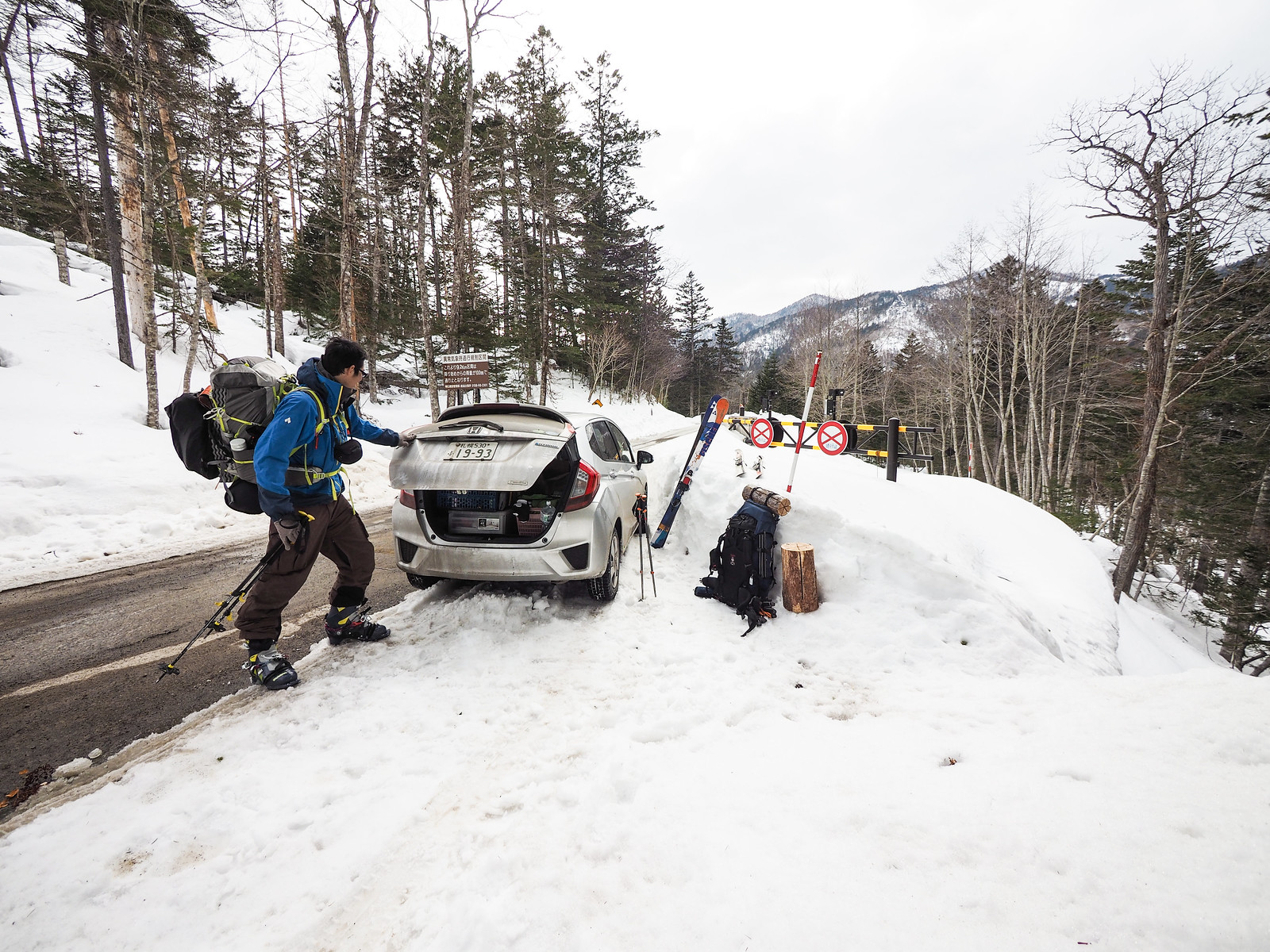
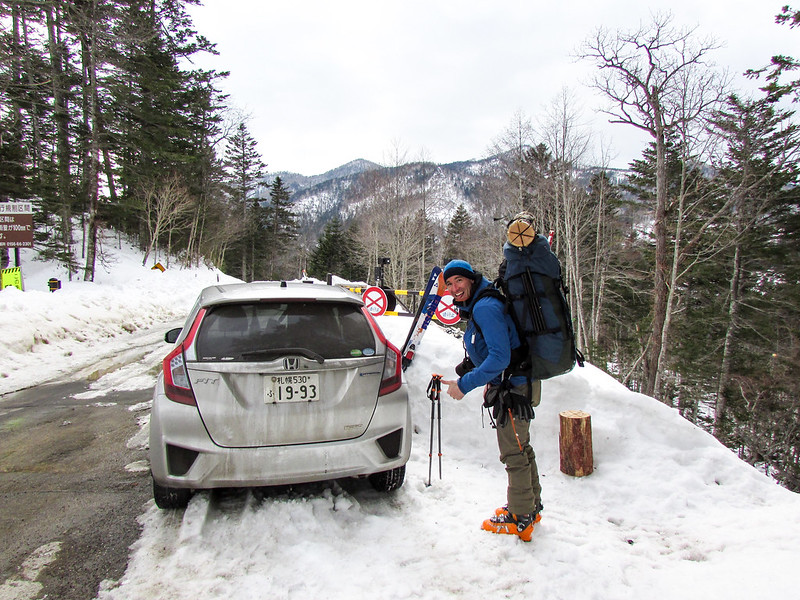

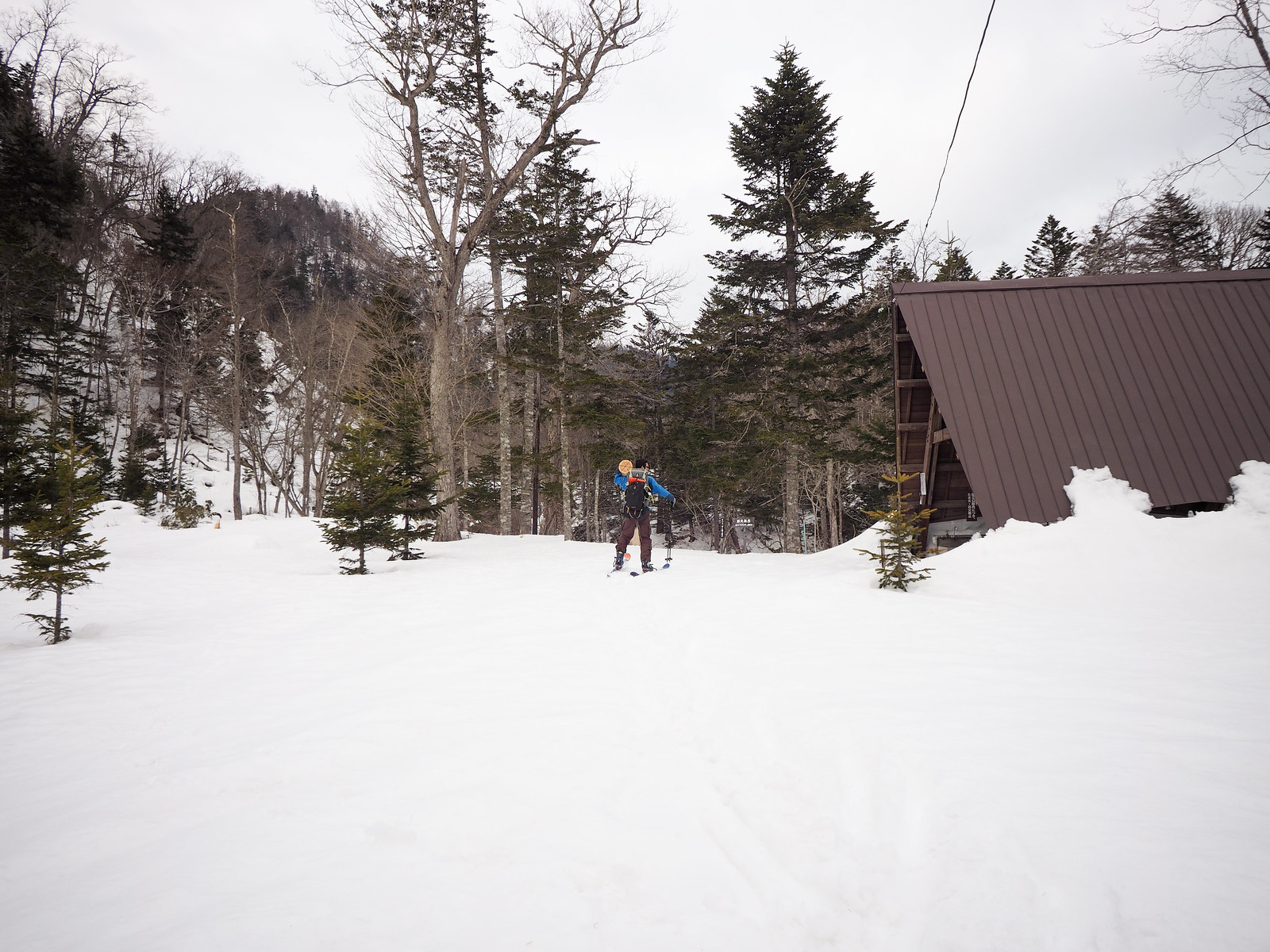
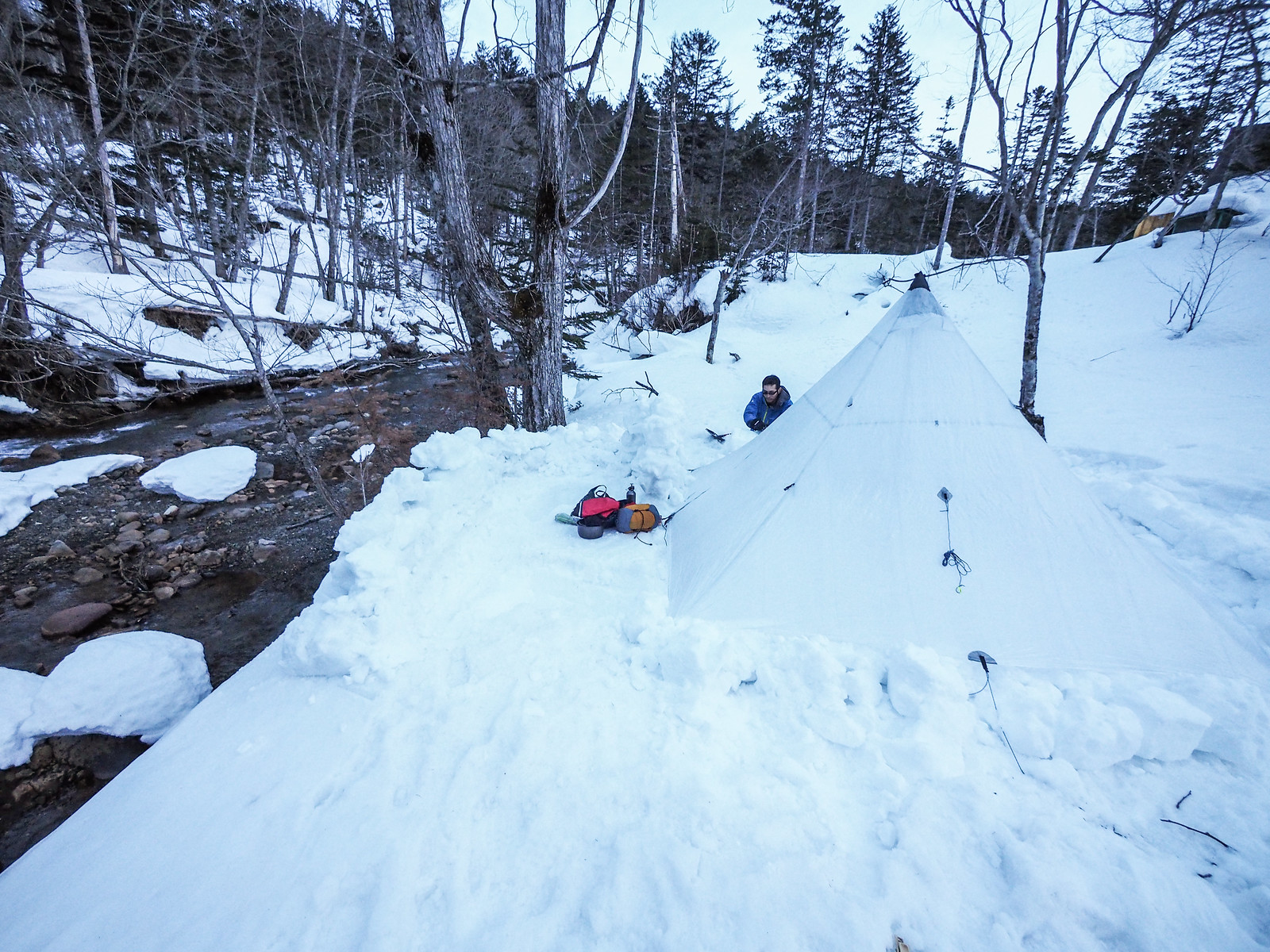
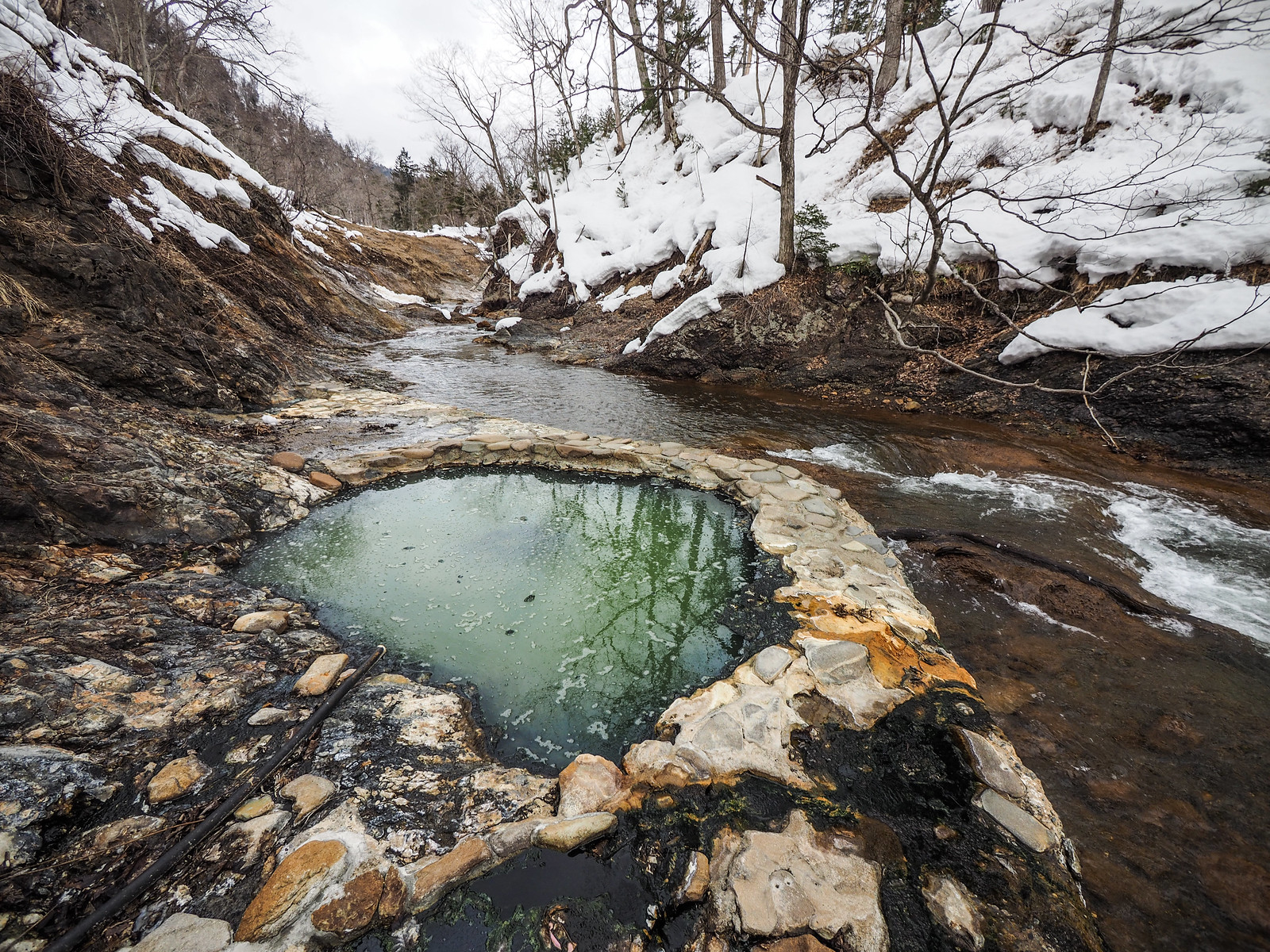
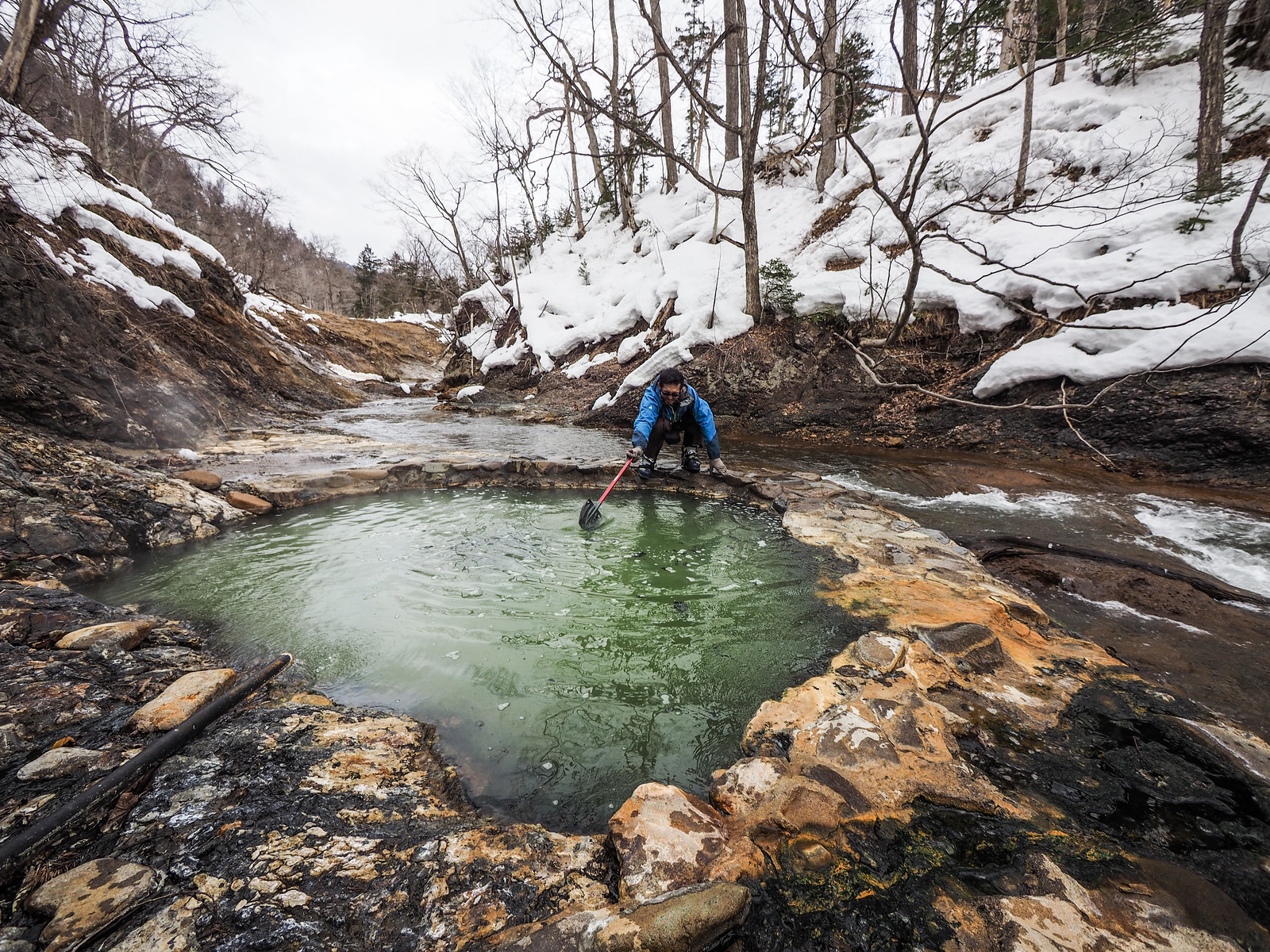
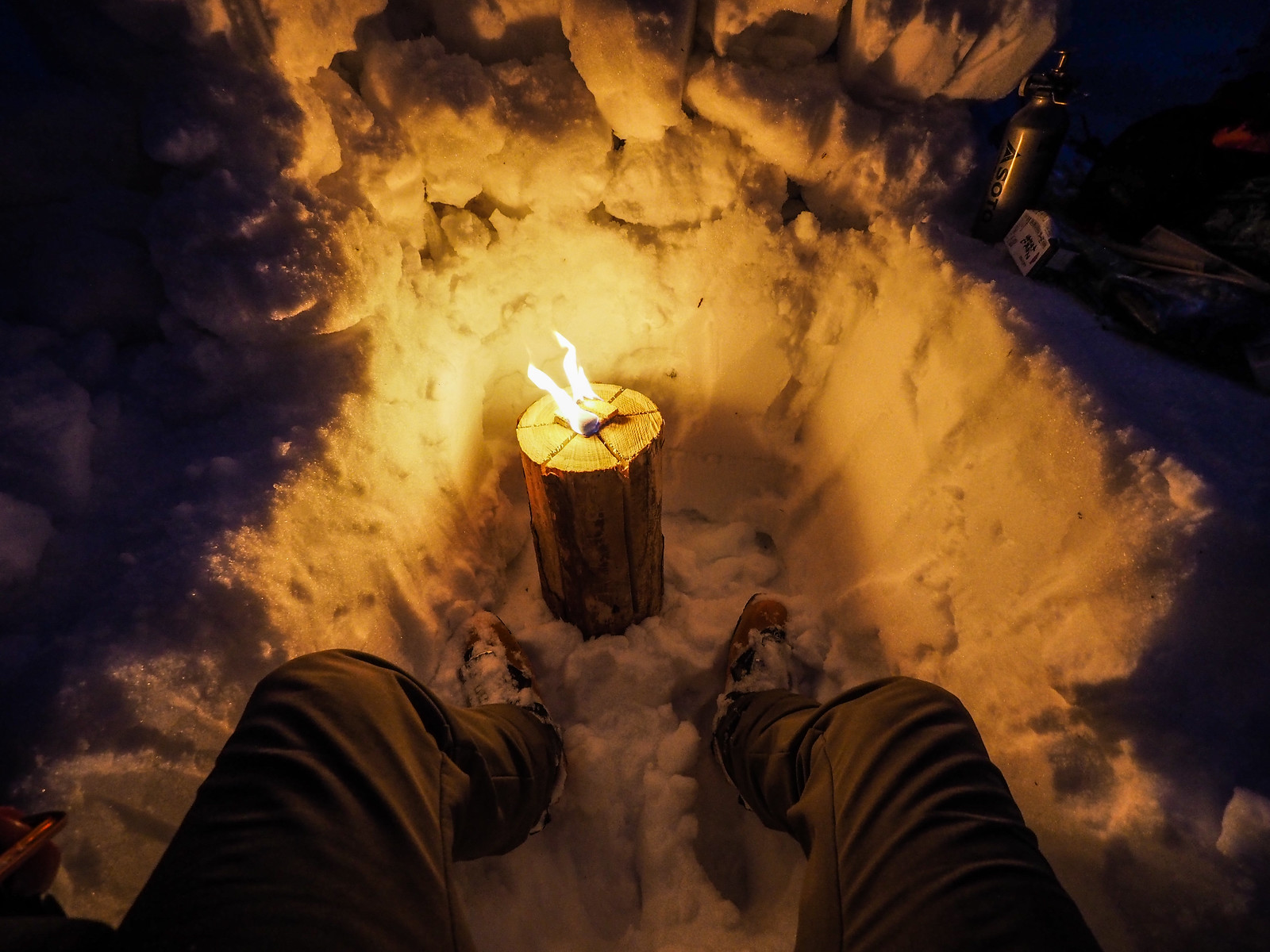
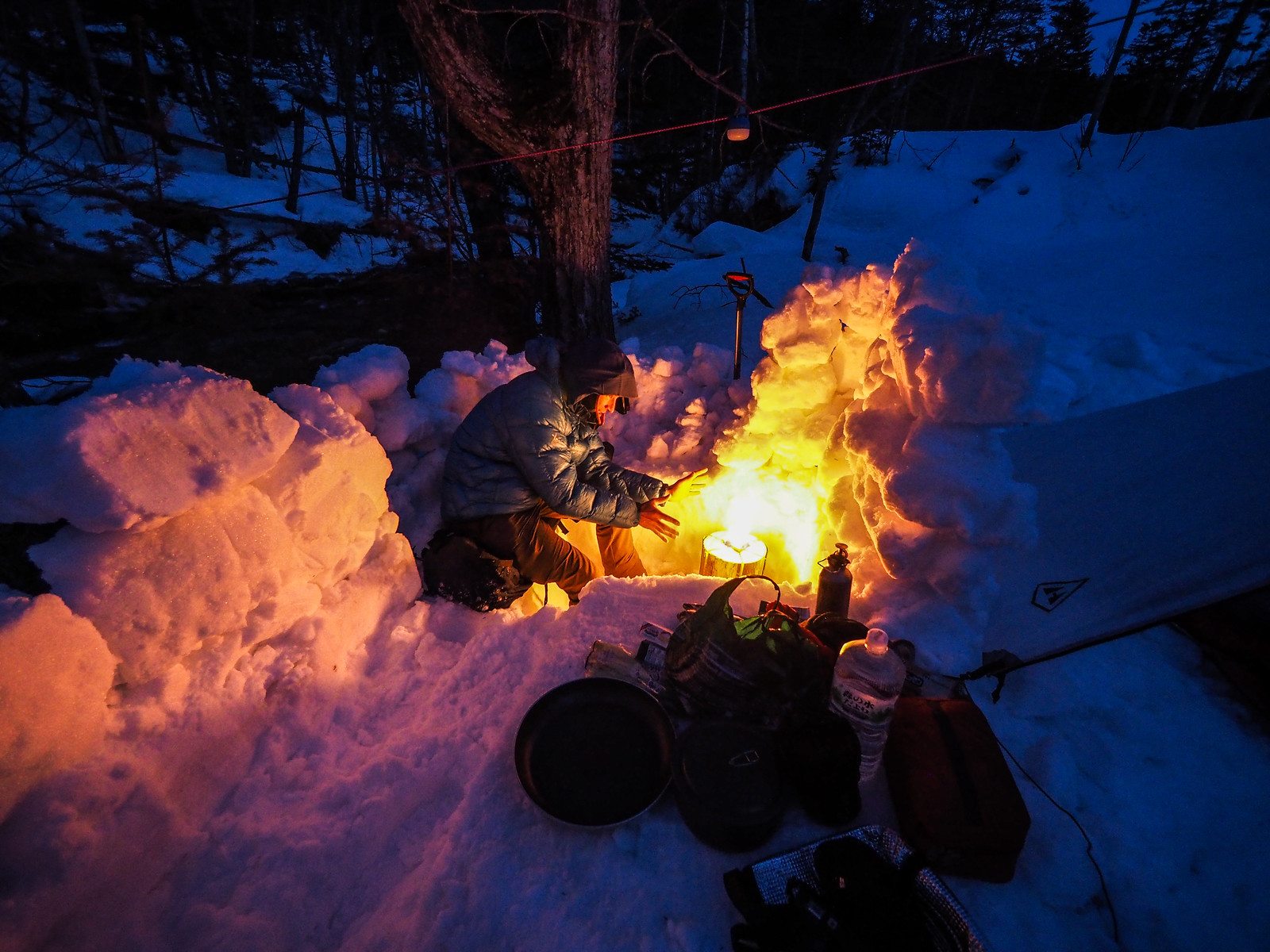
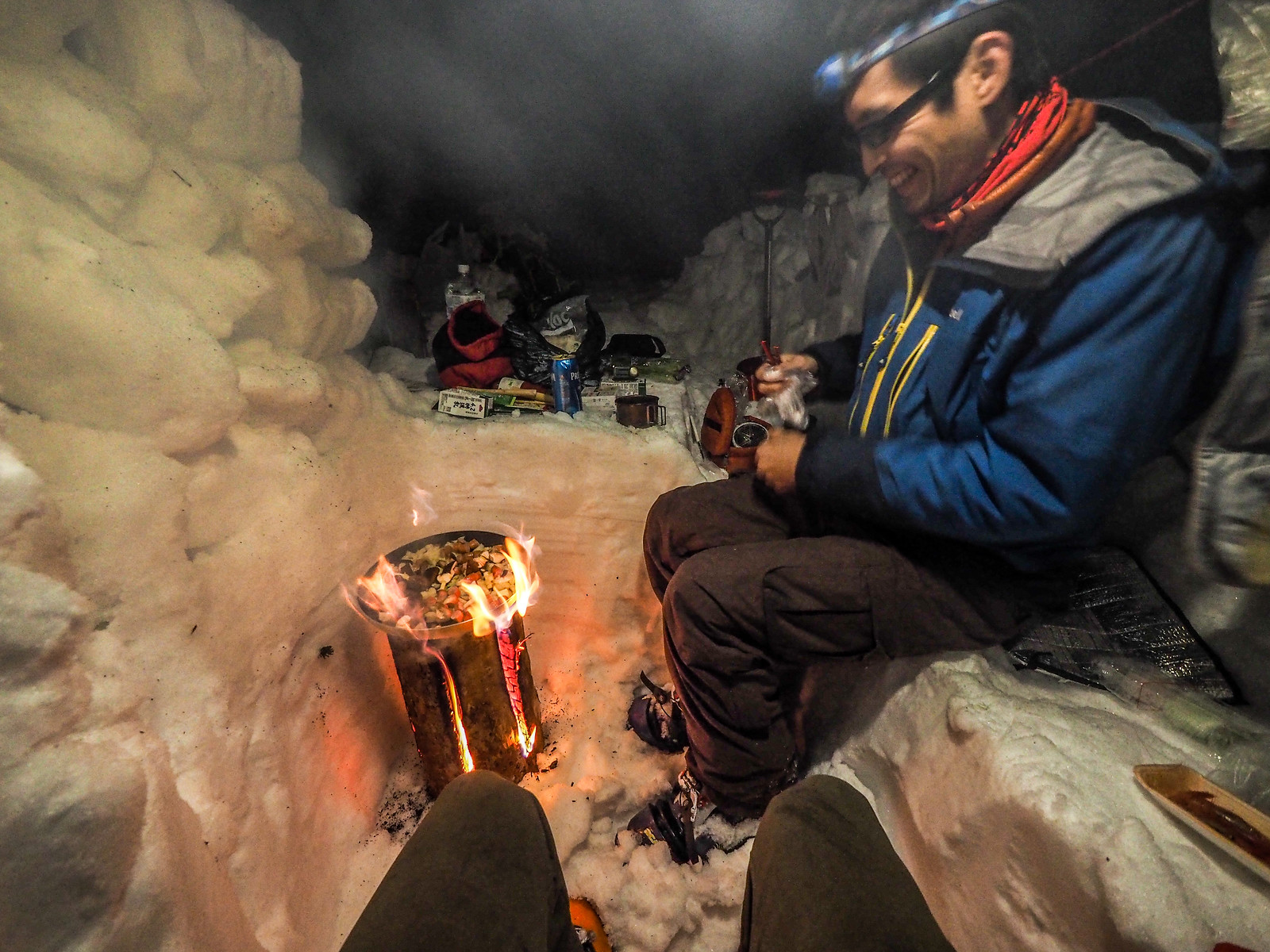
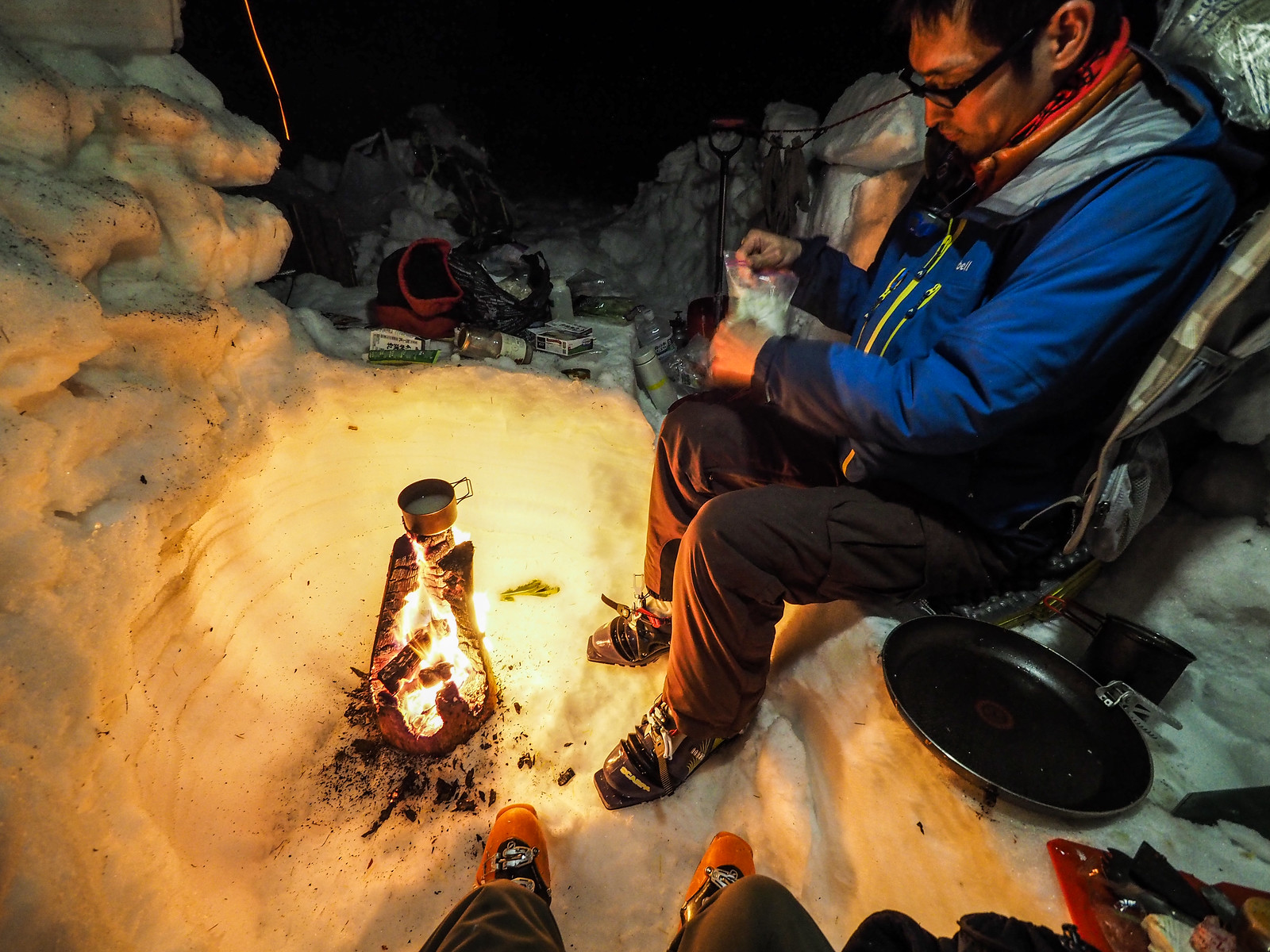
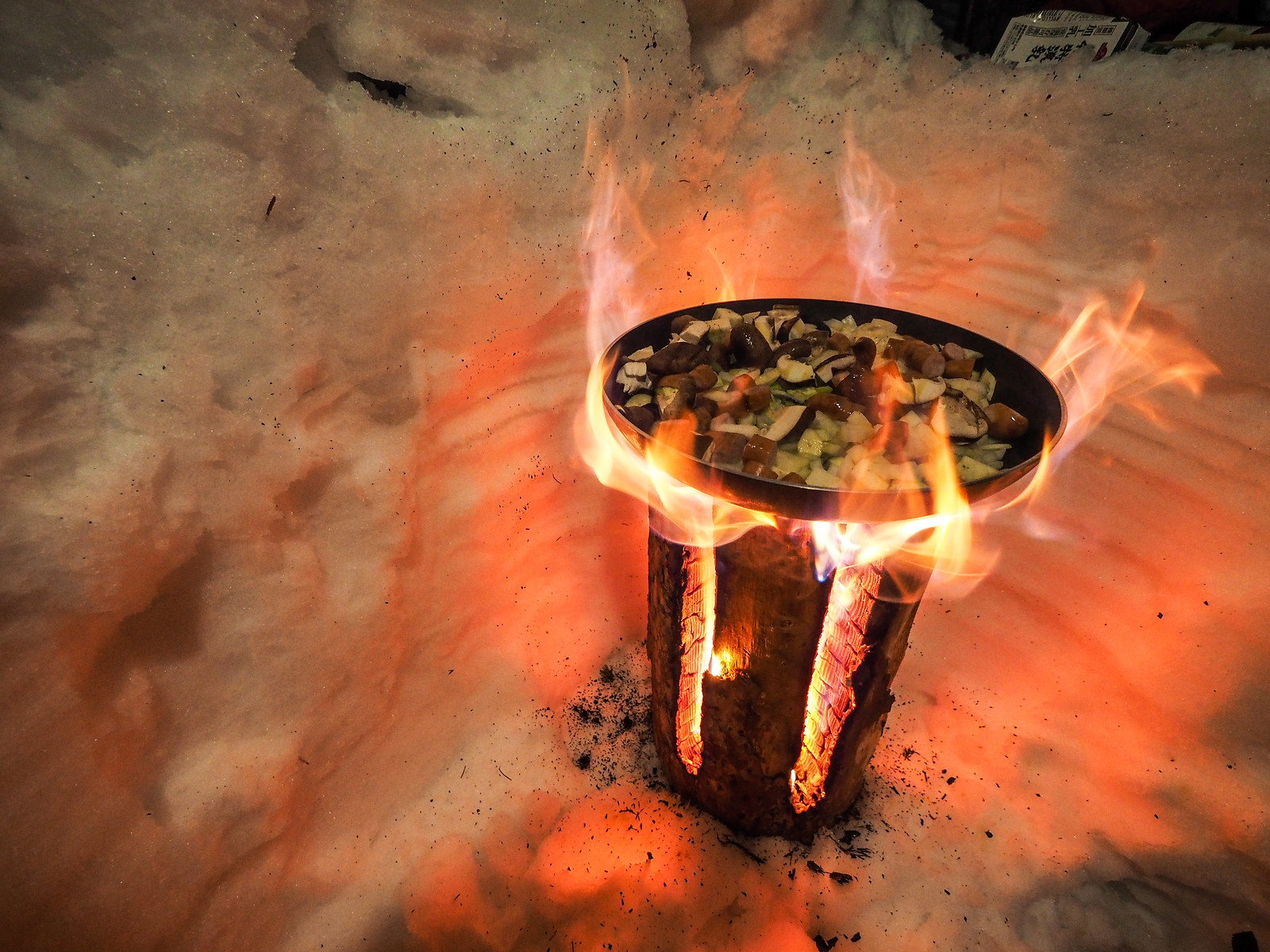
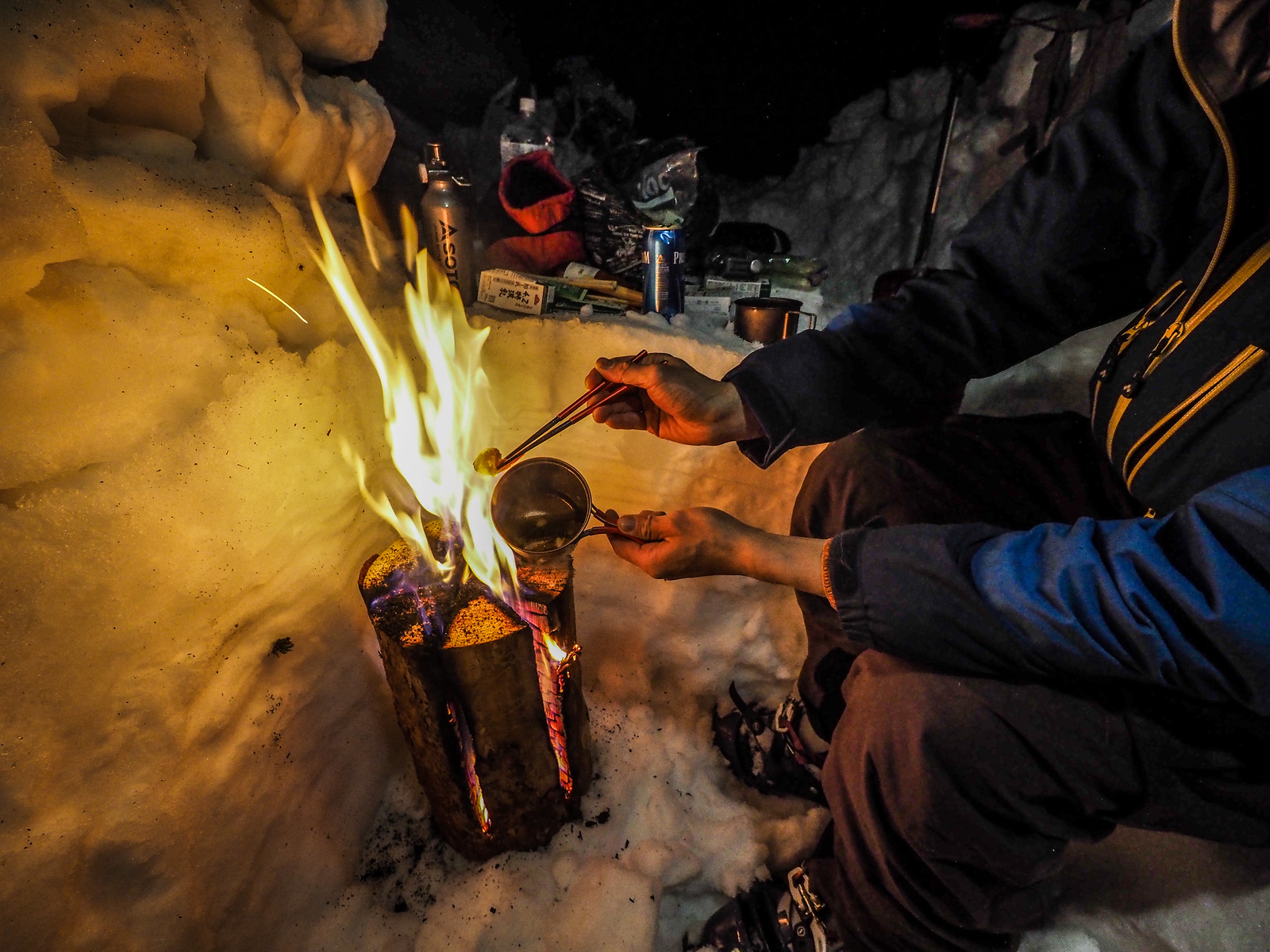
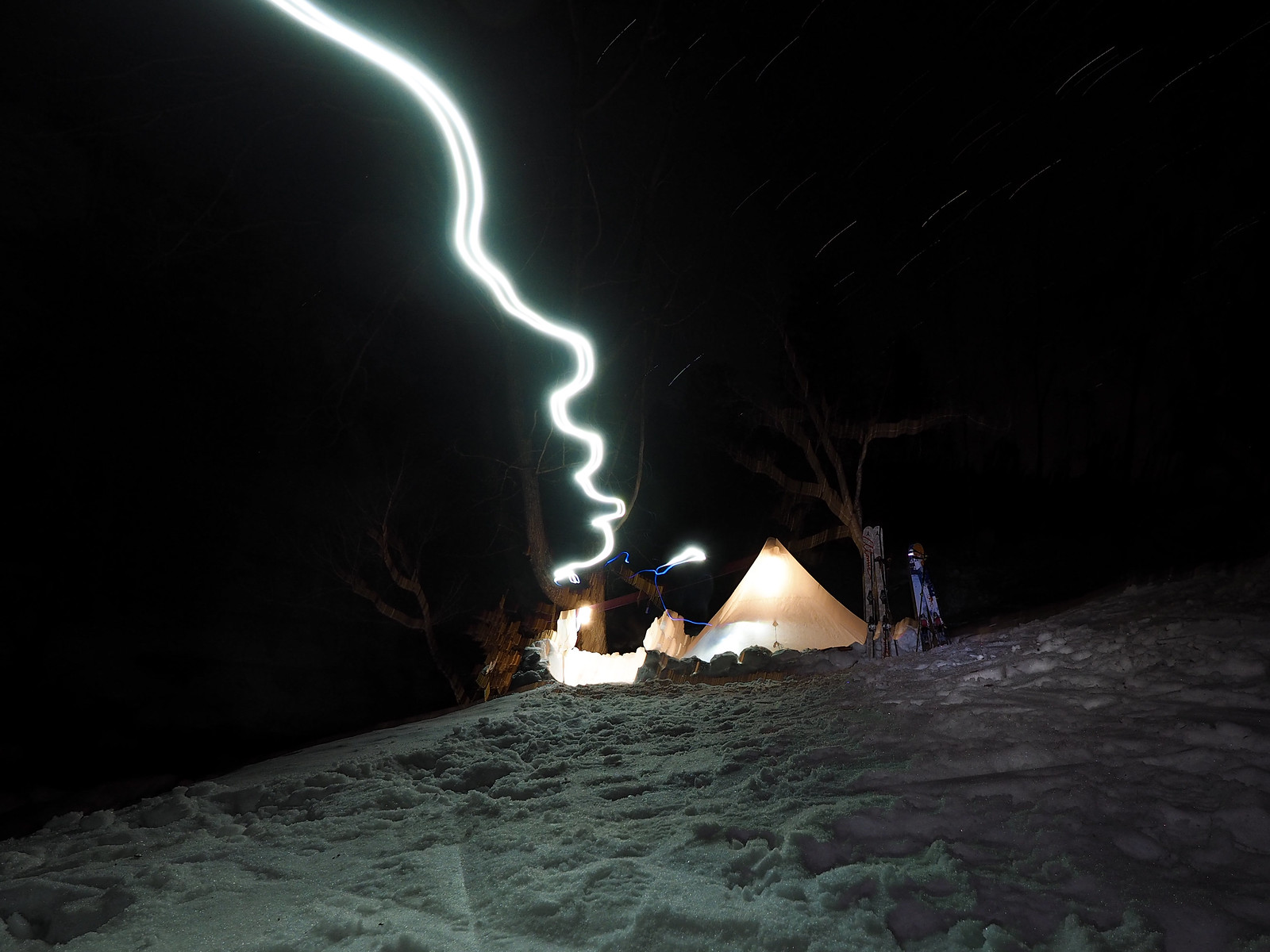
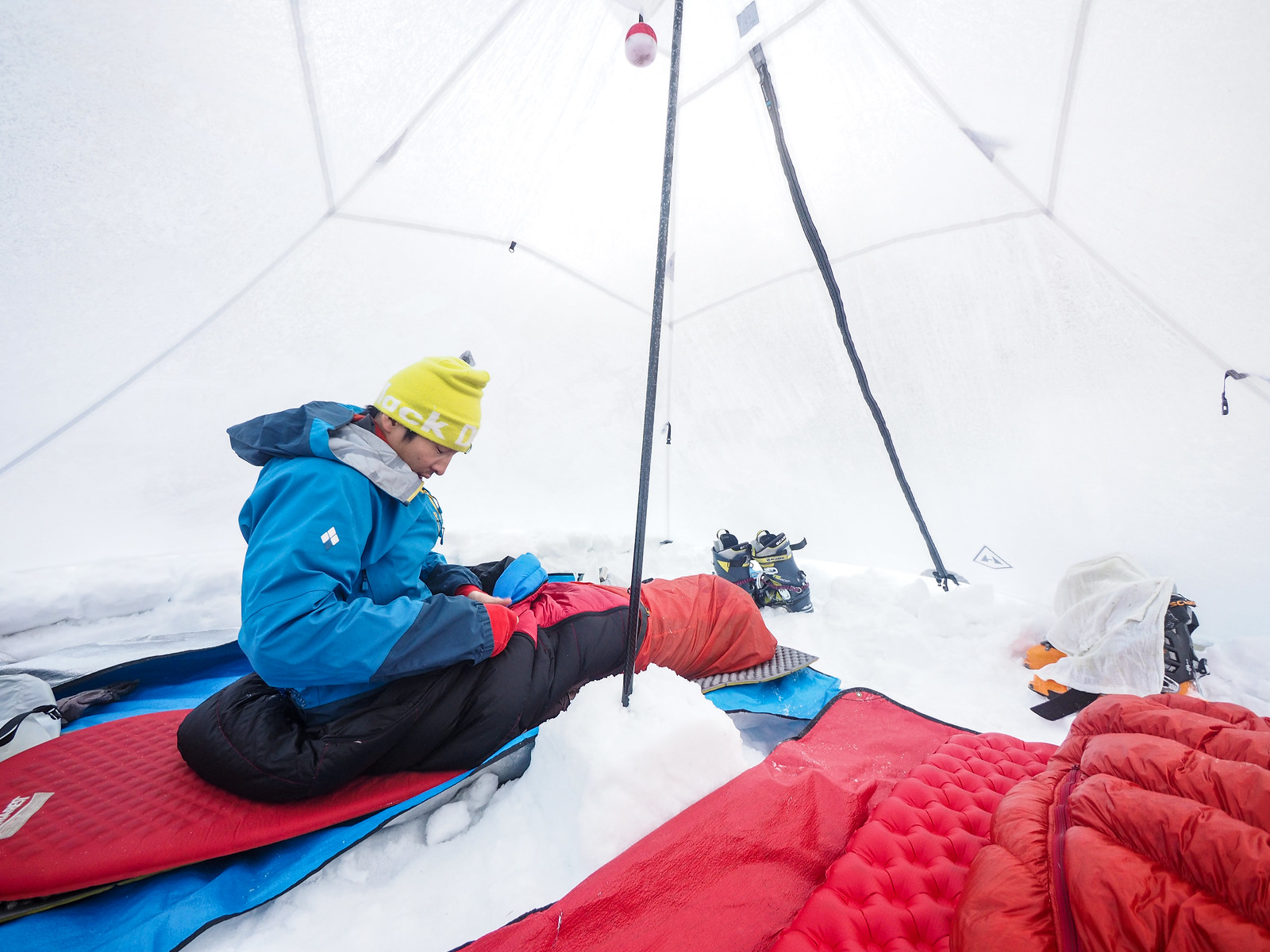
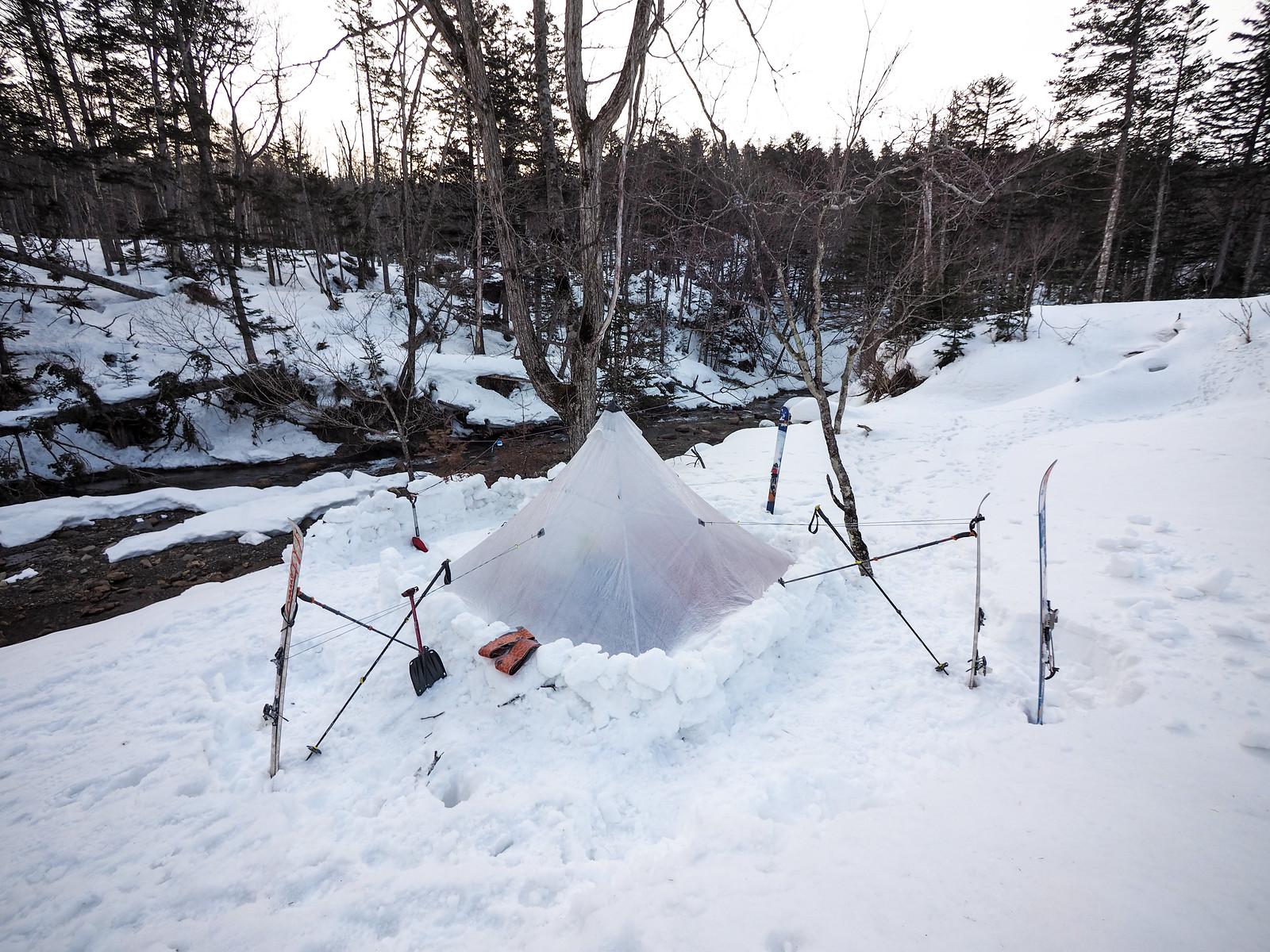
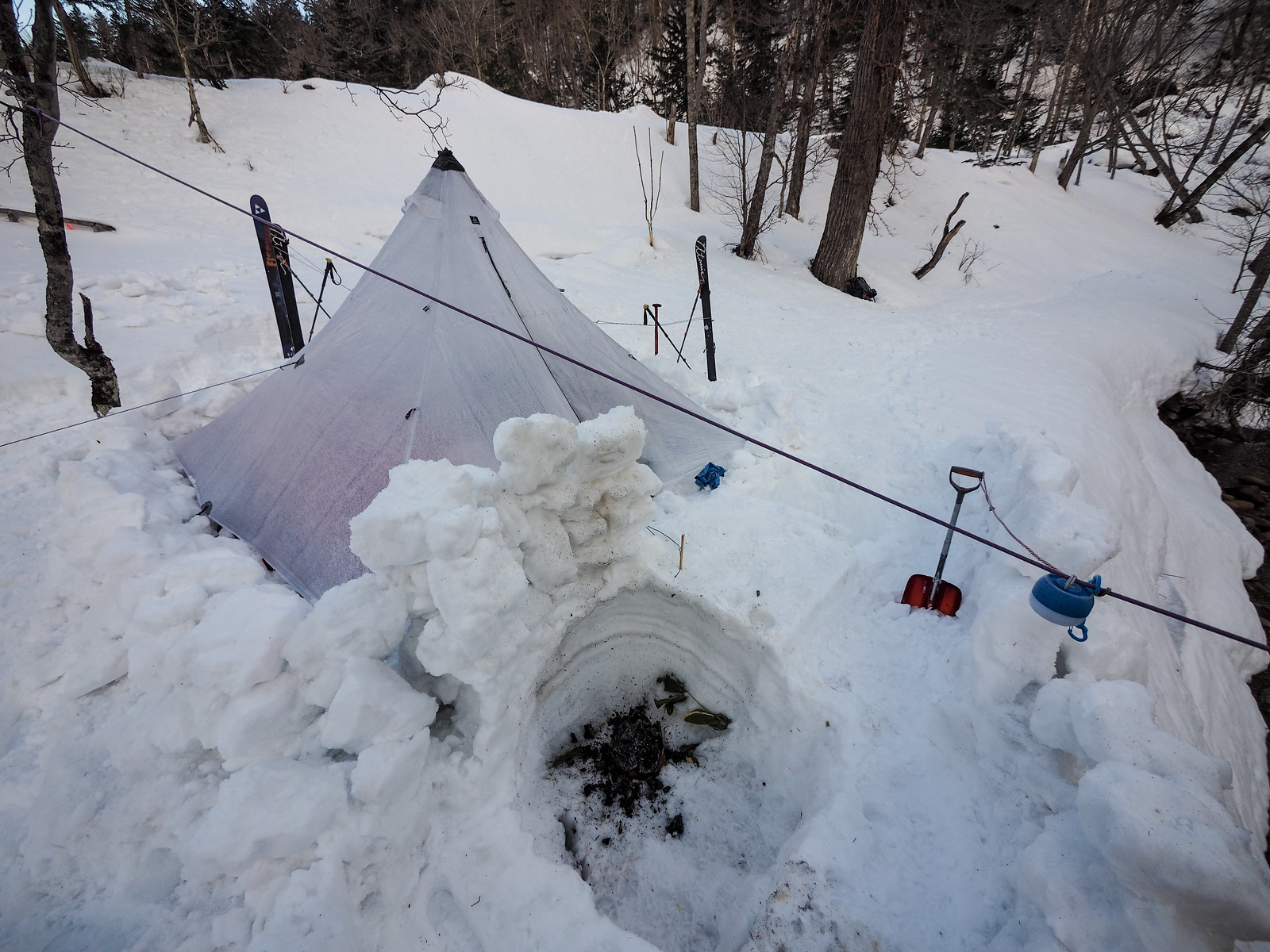
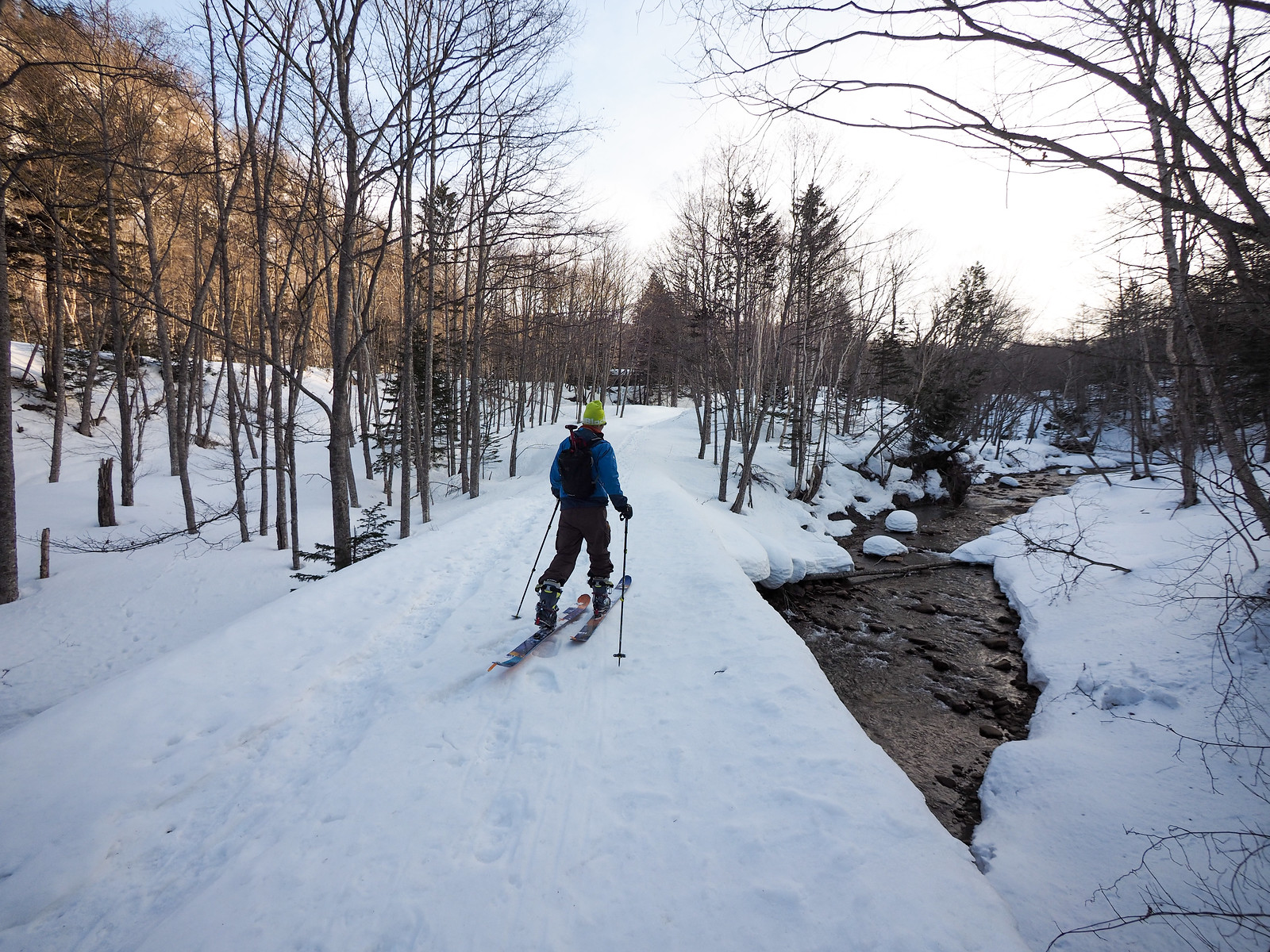
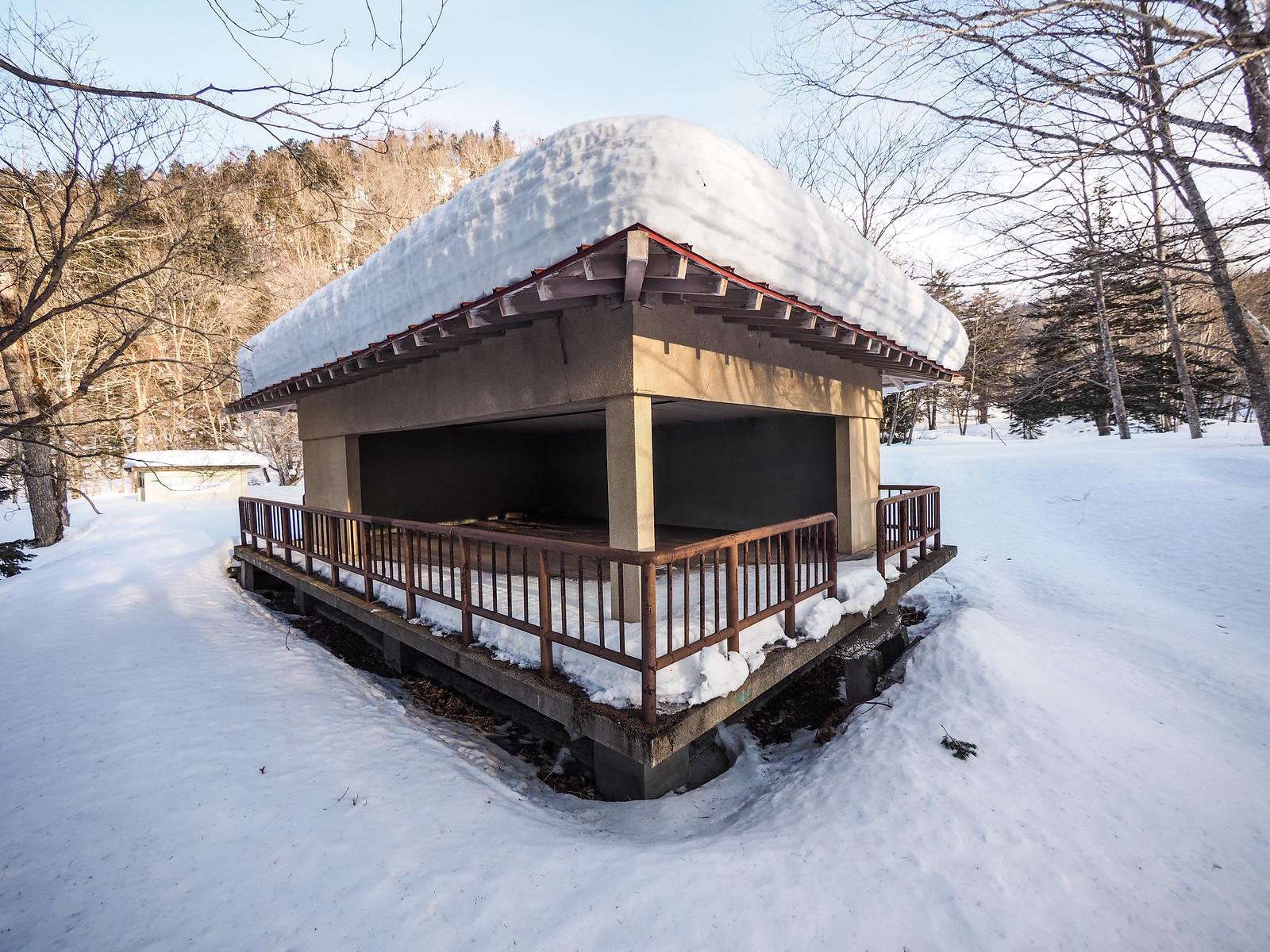

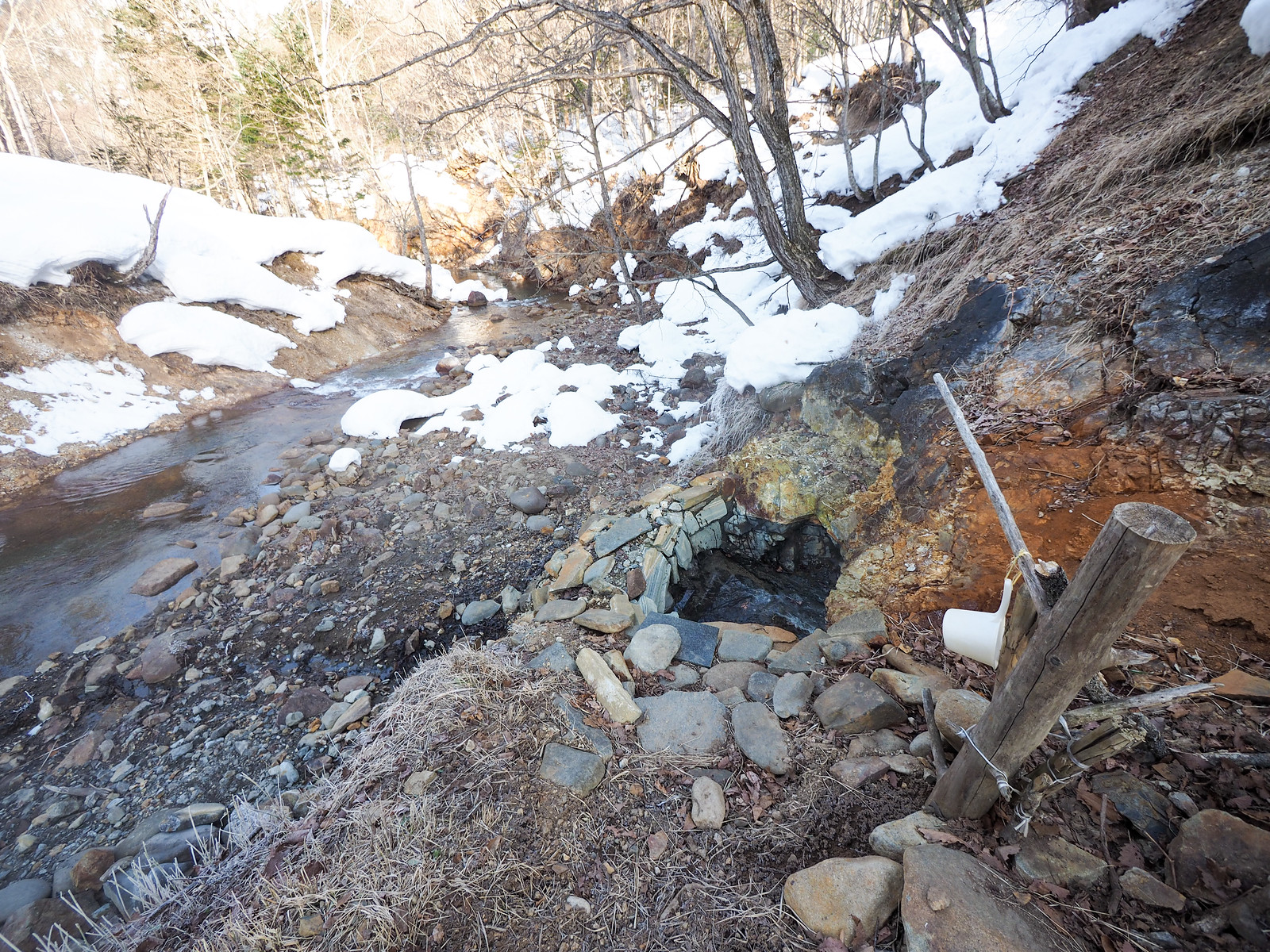
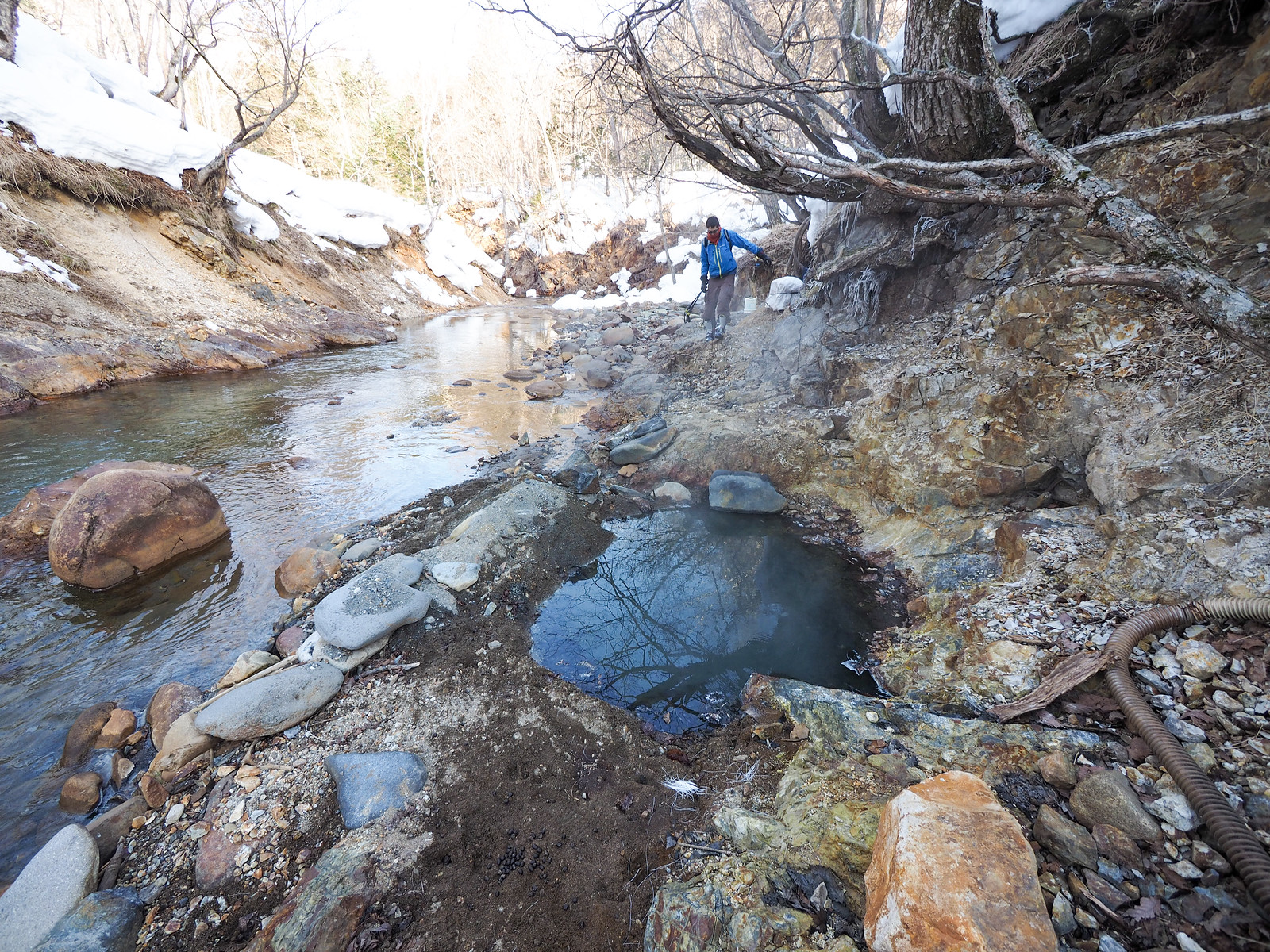
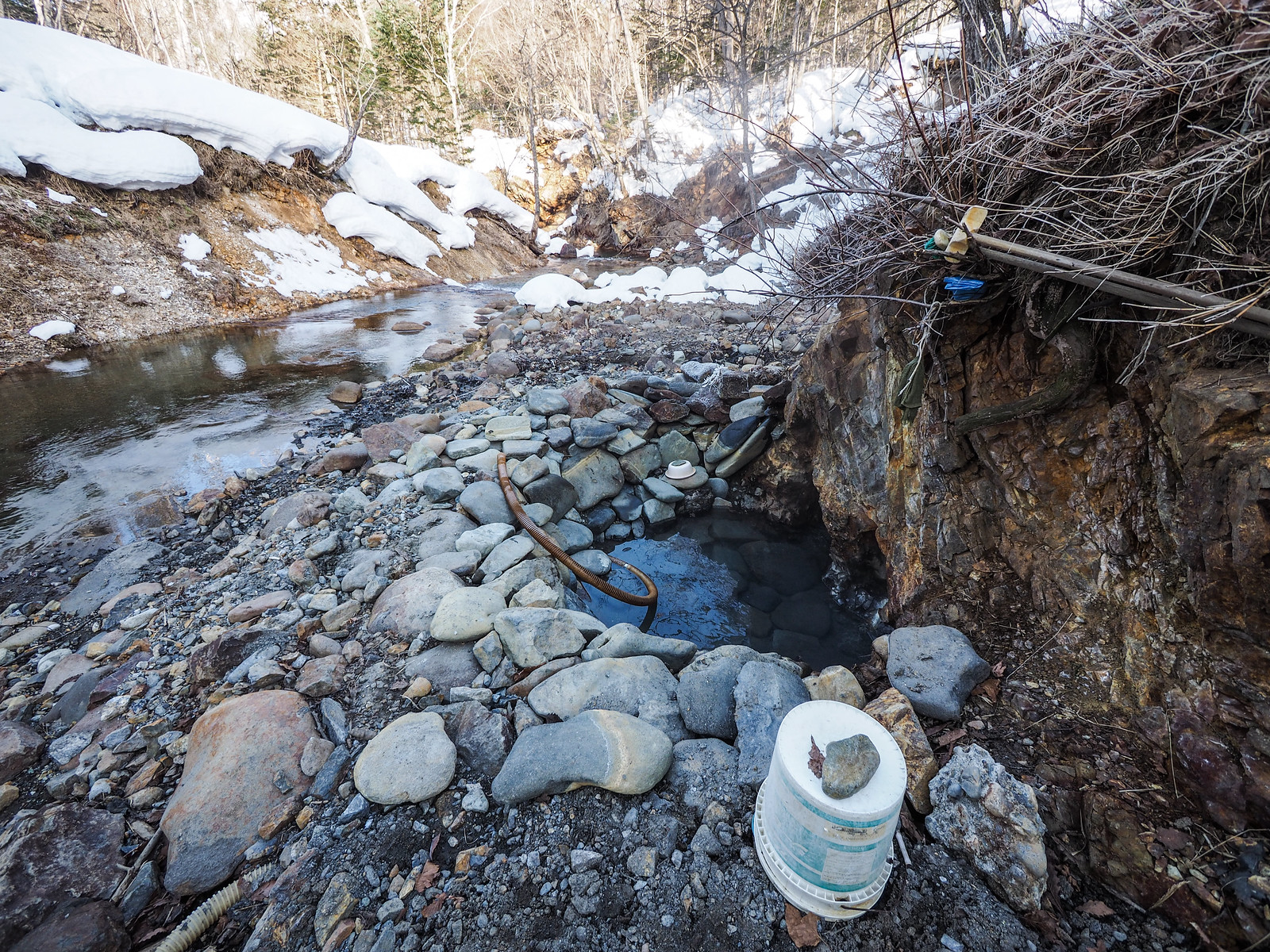
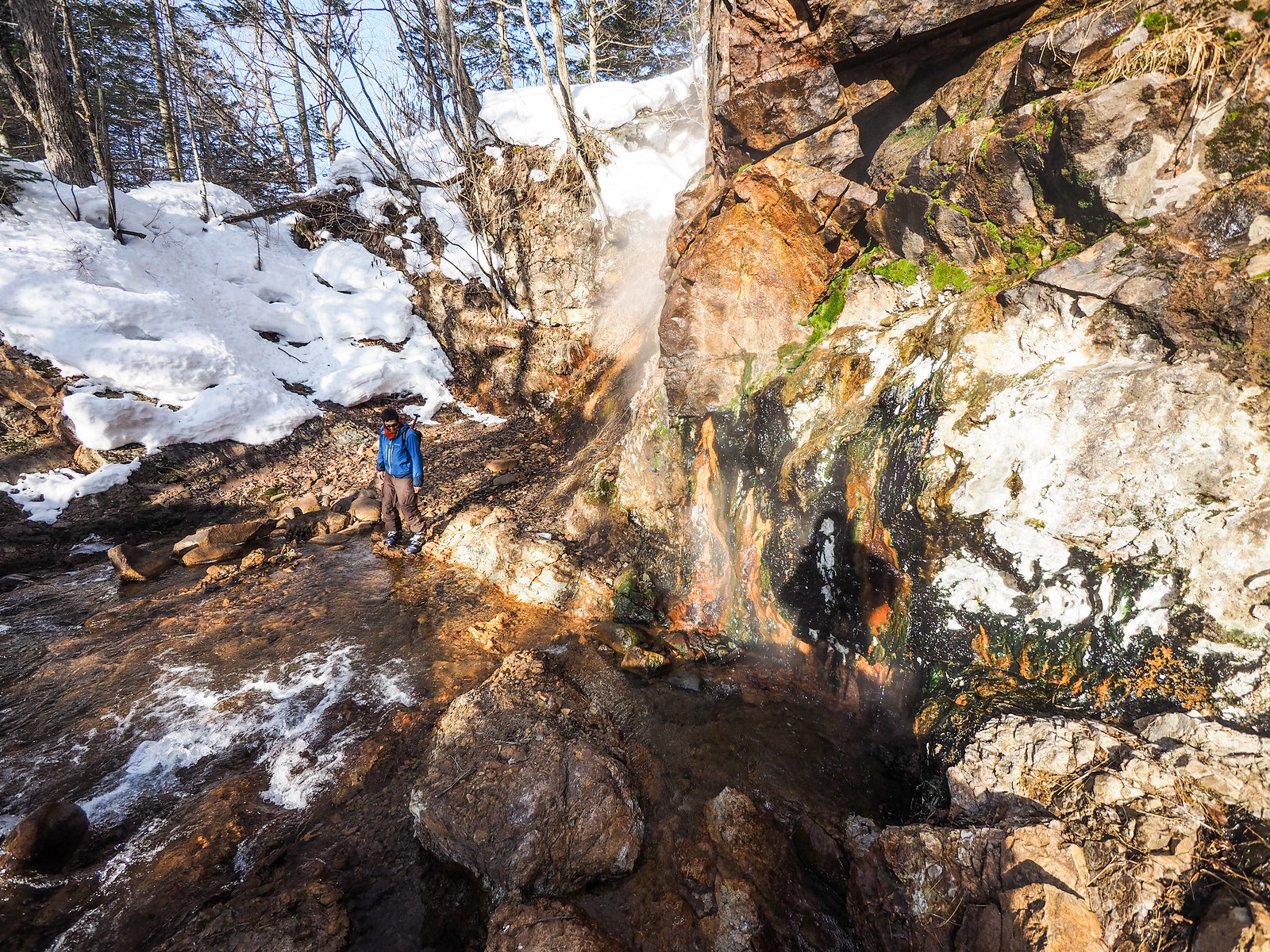
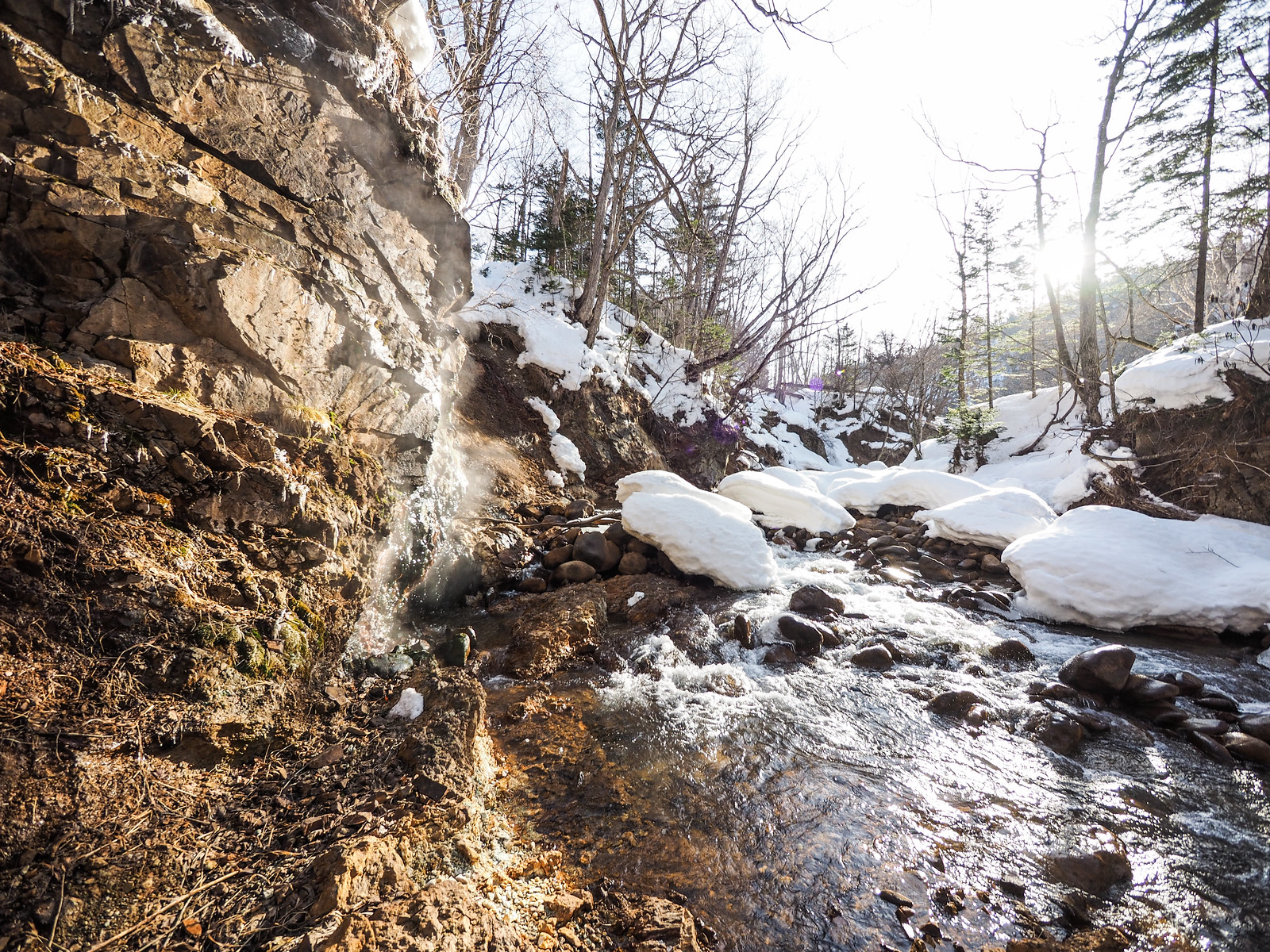

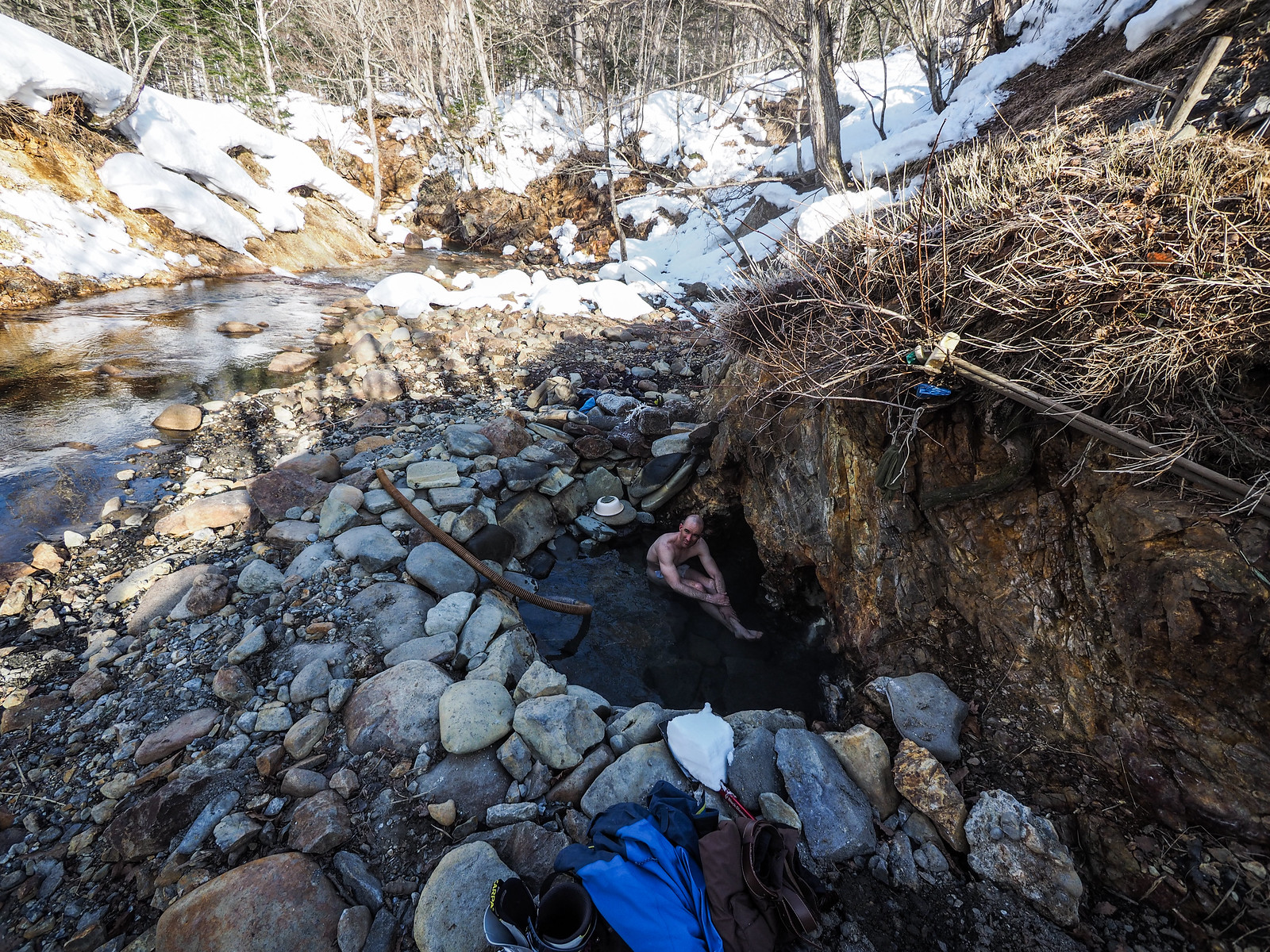

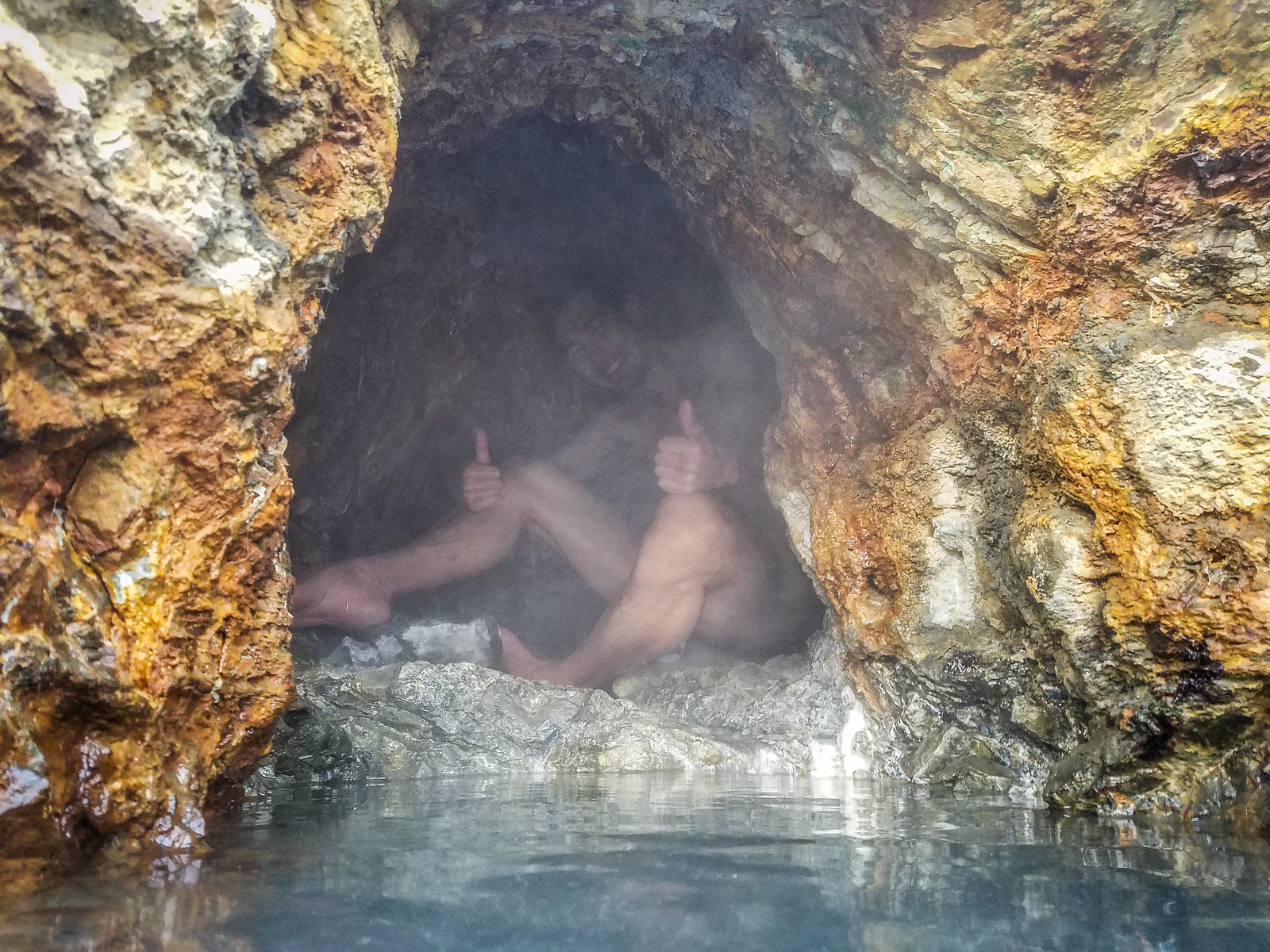
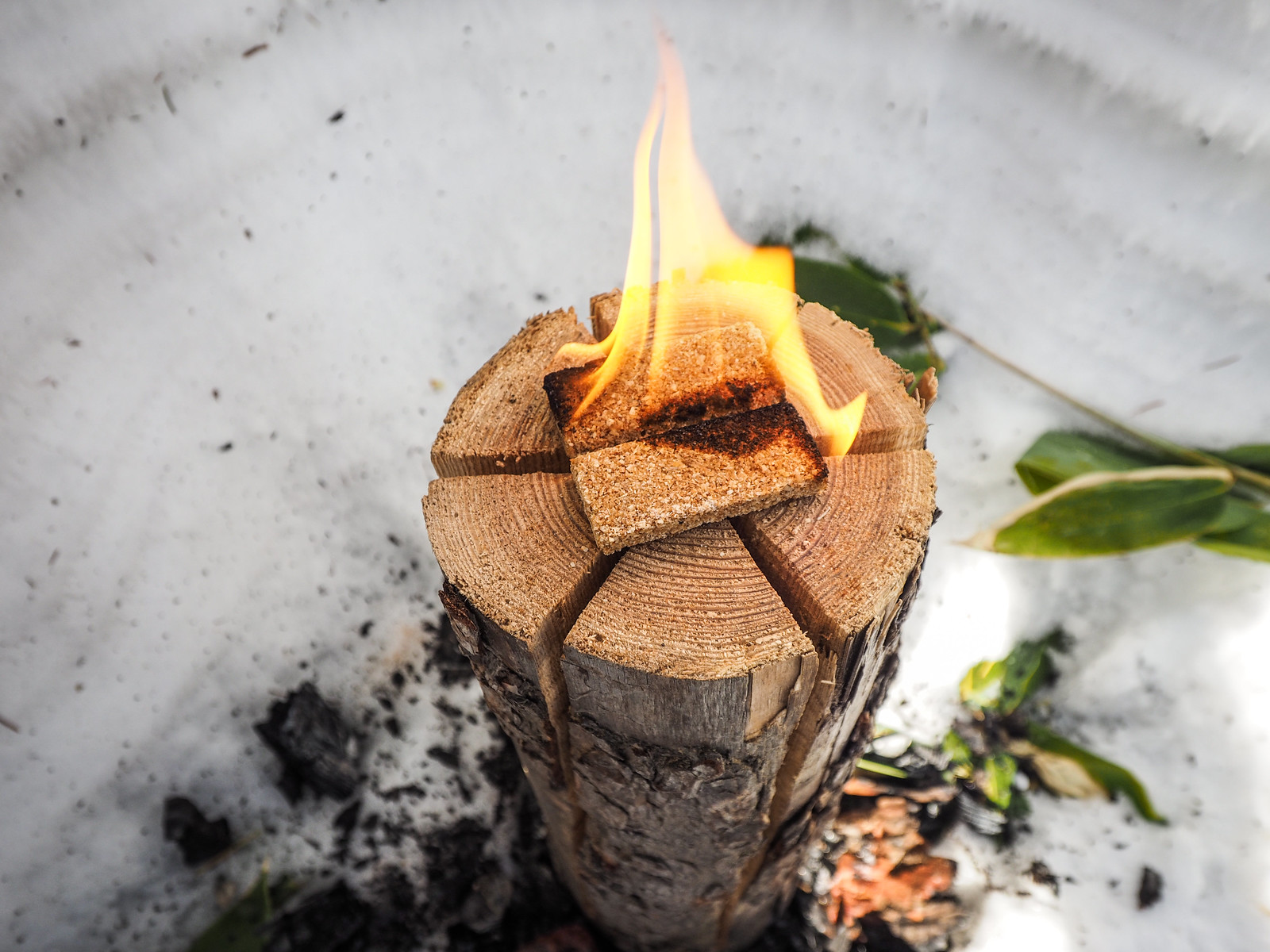
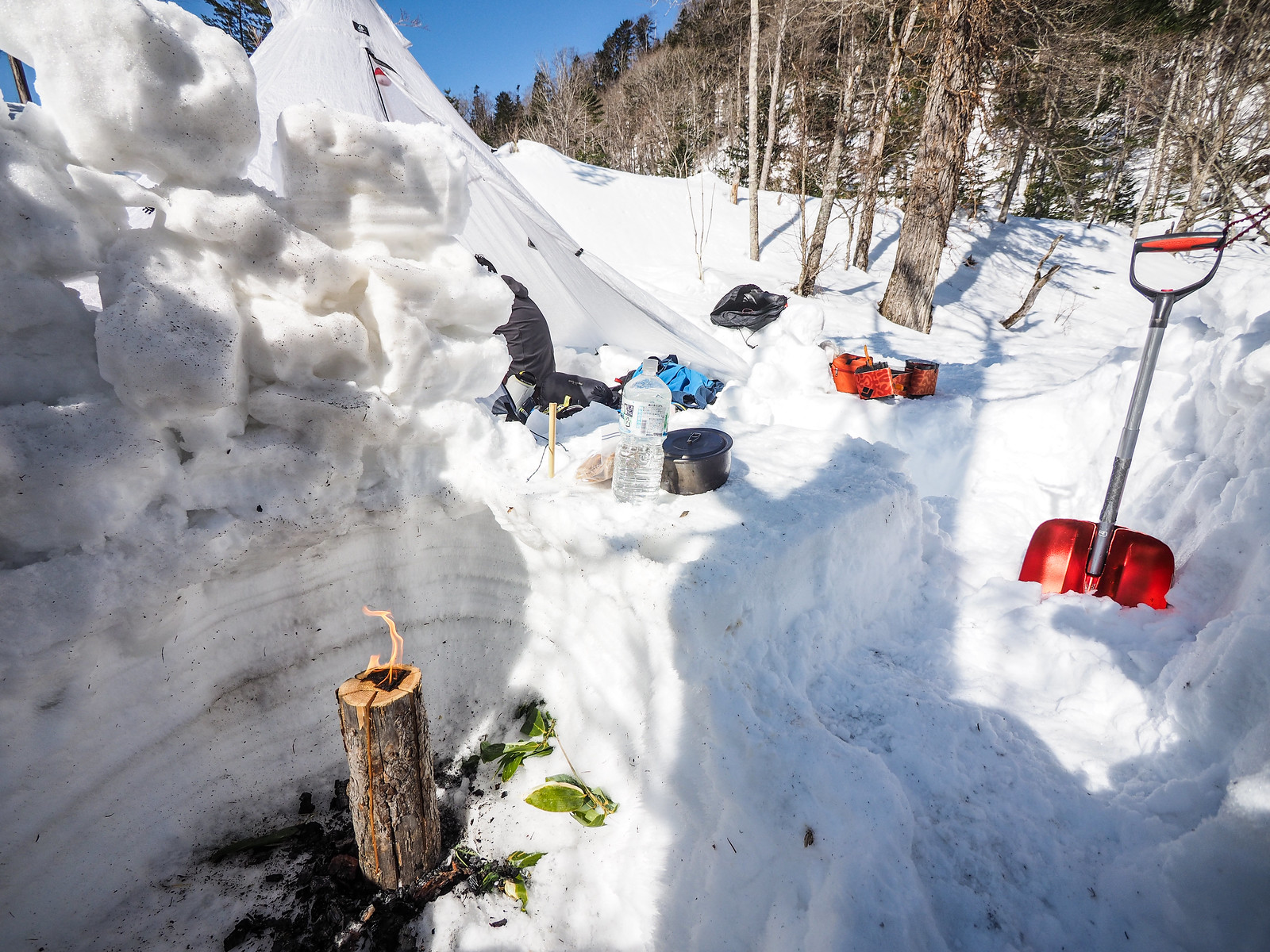
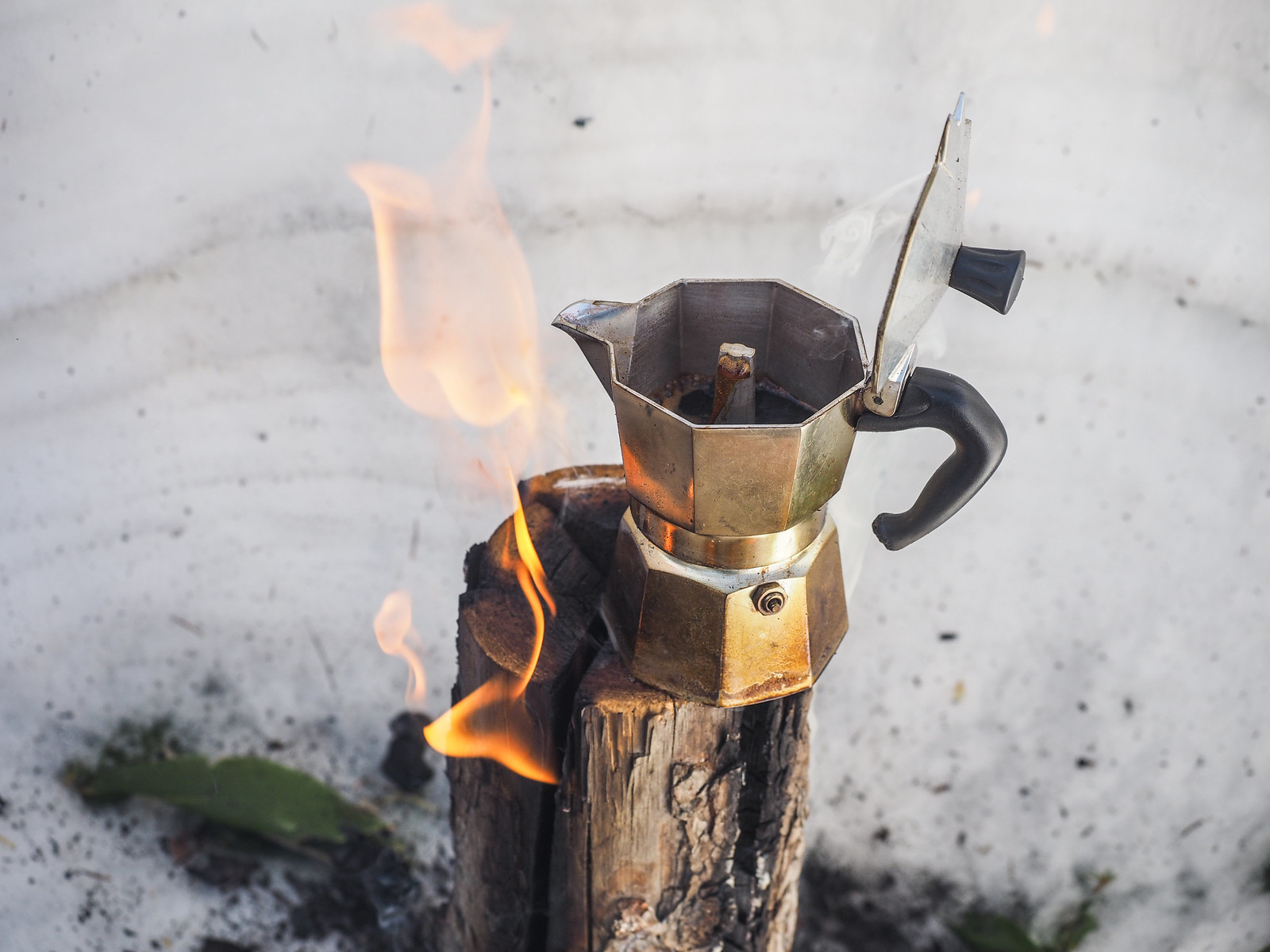
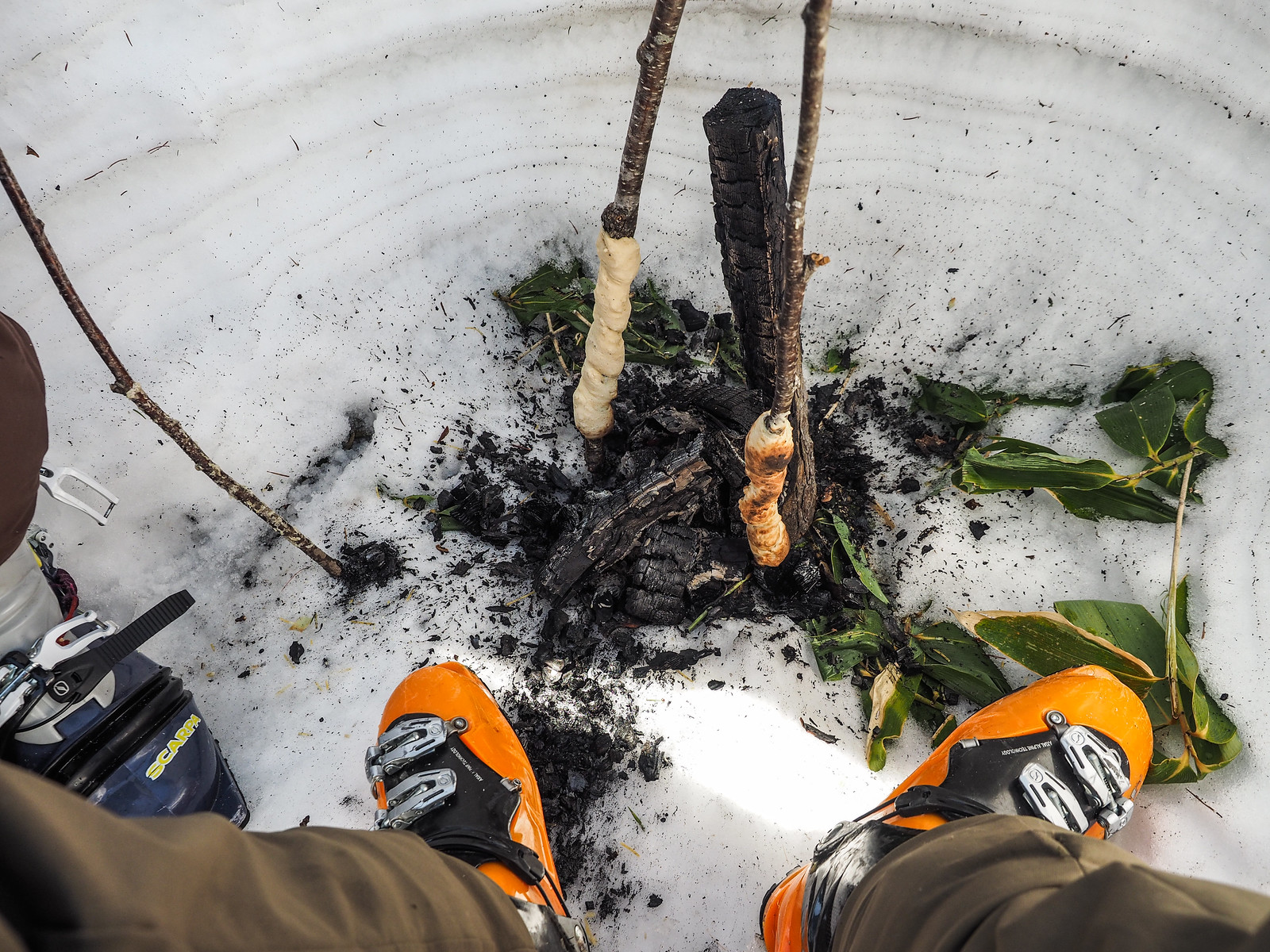
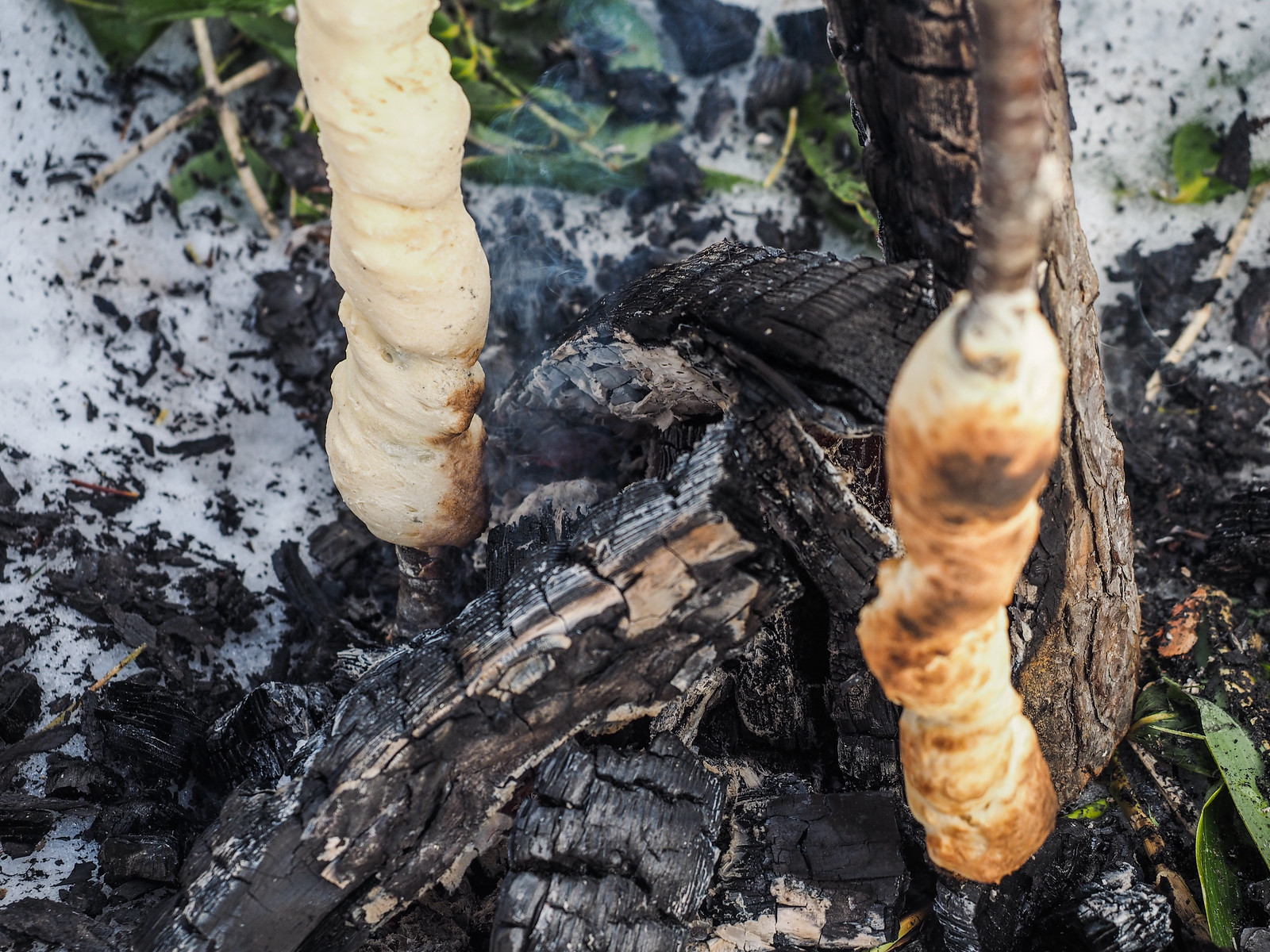
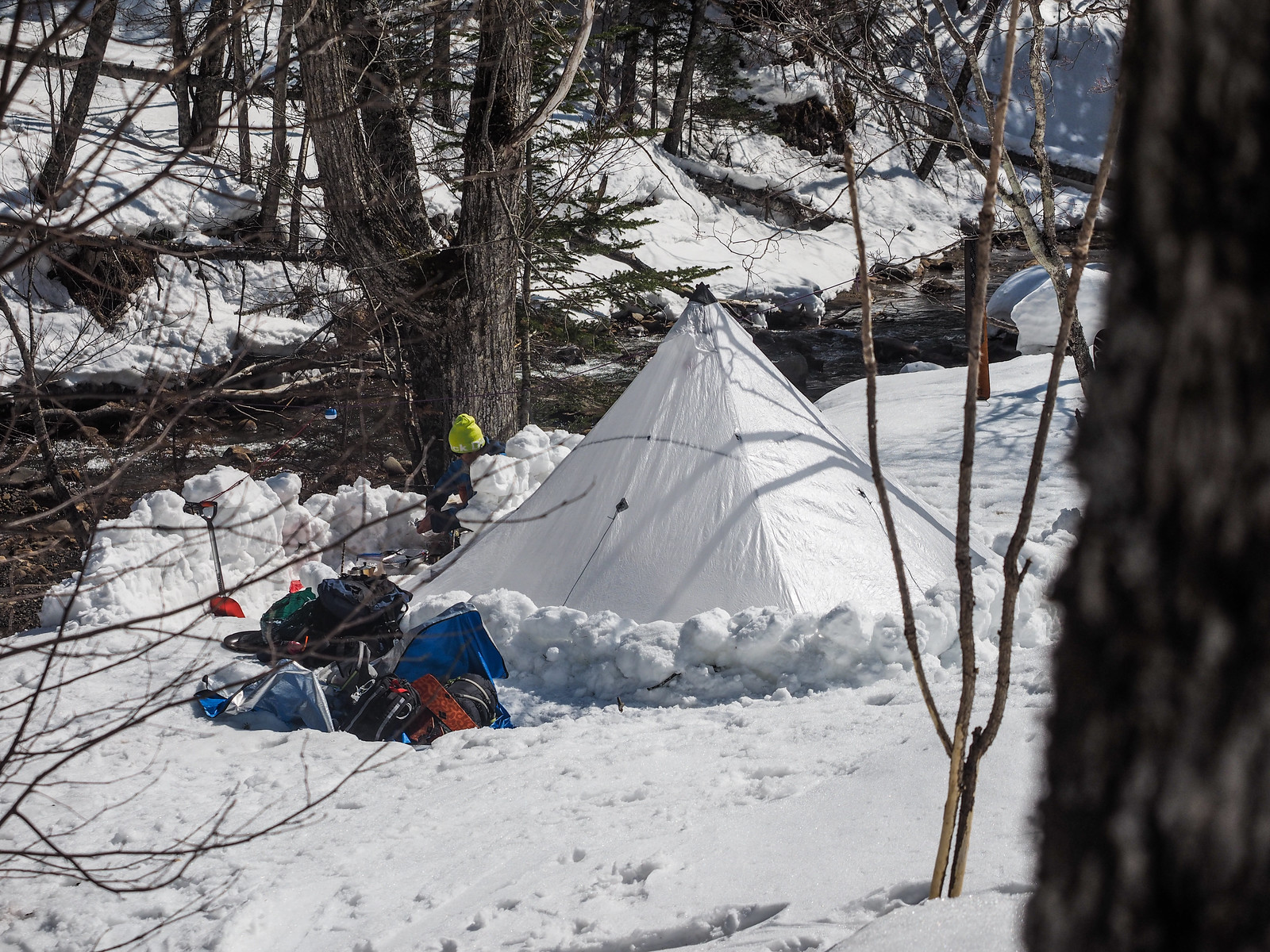
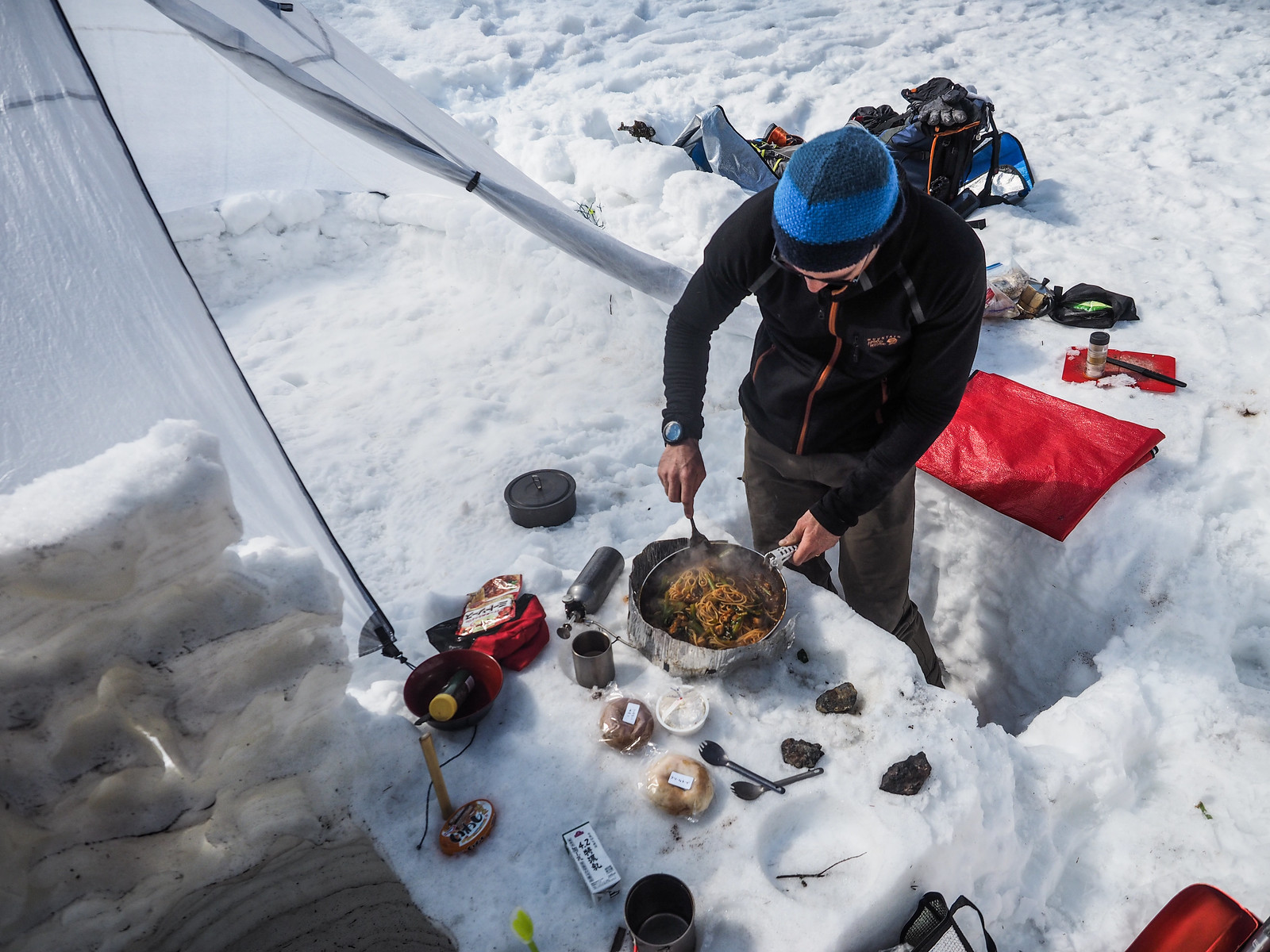
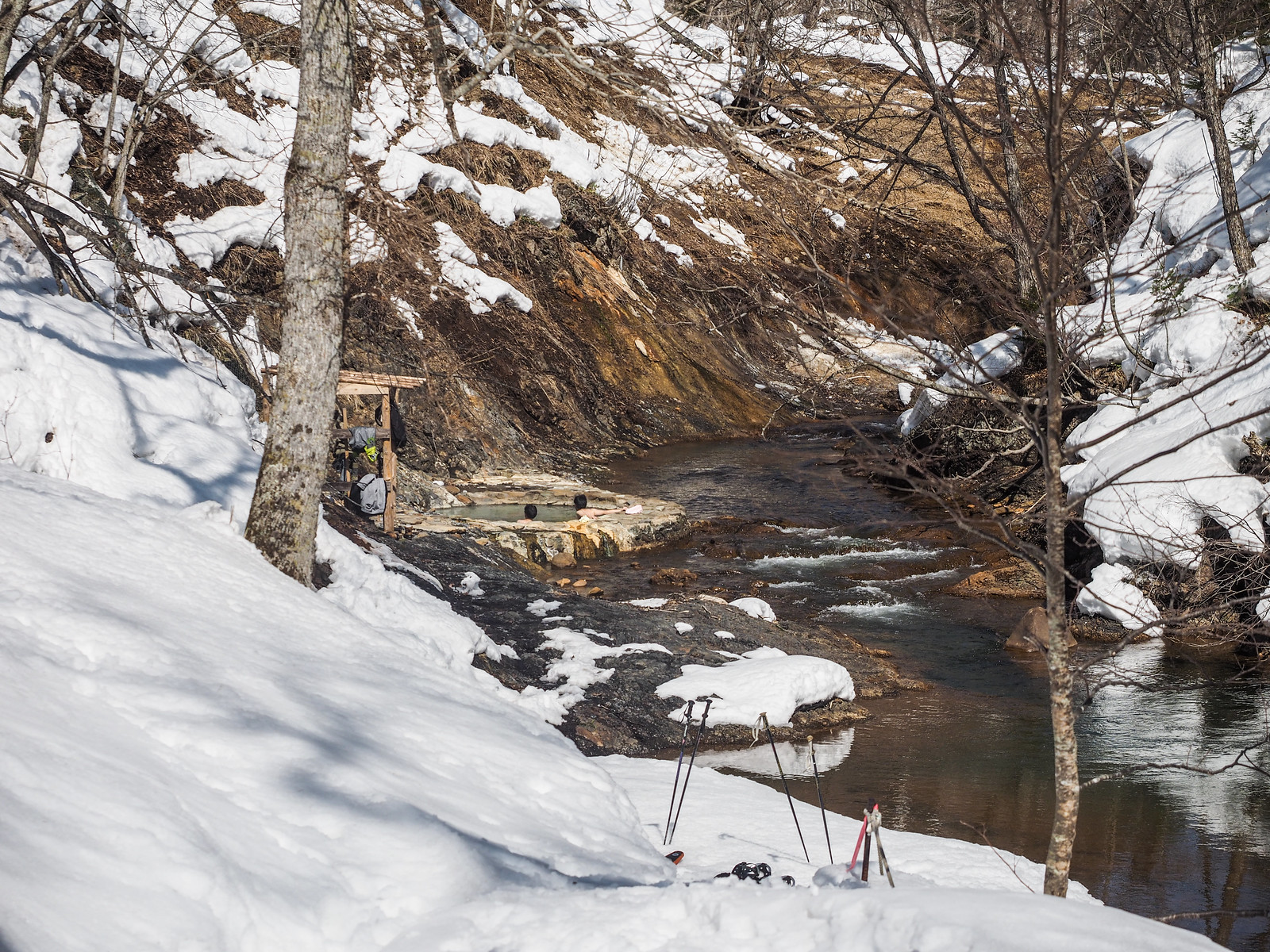







4 thoughts on “Shikaribetsu Gorge Hot Springs Camping”
Hi,
thank you for your sharing
I like it so much, I plan to go camping with my son at the end of December.
Can I ask some questions?
I am troubled by my traffic now, I don’t have a car.
I started from Sapporo, but I can’t find too much information about public transportation or connecting vehicles on the Internet.
When I go there at Christmas time, how many temperature sleeping bags should I carry?
Hi Jia, thanks for the question. Have you camped in the snow before? Please be advised that from mid-November until April, this area is a serious winter environment. At Christmas, the campground will be officially closed, and there will be a lot of very deep snow. To get to the campground, you’ll need to have snowshoes. You’ll need a good four-season mountaineering tent – if it snows, your tent will need to be able to handle at least 50cm of snow overnight, sometimes more. You’ll also need a good four-season sleeping bag and very warm sleeping mat – temperatures may be as low as -15deg C, with lots of wind. If you do choose to visit, I hope you are well prepared and enjoy the experience. As mentioned in the post there is no public transport to the campground or anywhere near it.
Thanks for the beta! My girlfriend and I checked these out on our trip through Hokkaido by camper van. We only went to the springs by the camp ground – Chinika-no-yu I think. Pools had plenty of green algae, but were clean otherwise. The two pools that drained into the big pool were slightly warmer and just hot enough for a good soak. The big pool was a little cool. We parked in the onsen’s lot and did not encounter any issues. Anyway, thought I’d say thanks and provide another account of conditions.
Thanks for the intel Matt!